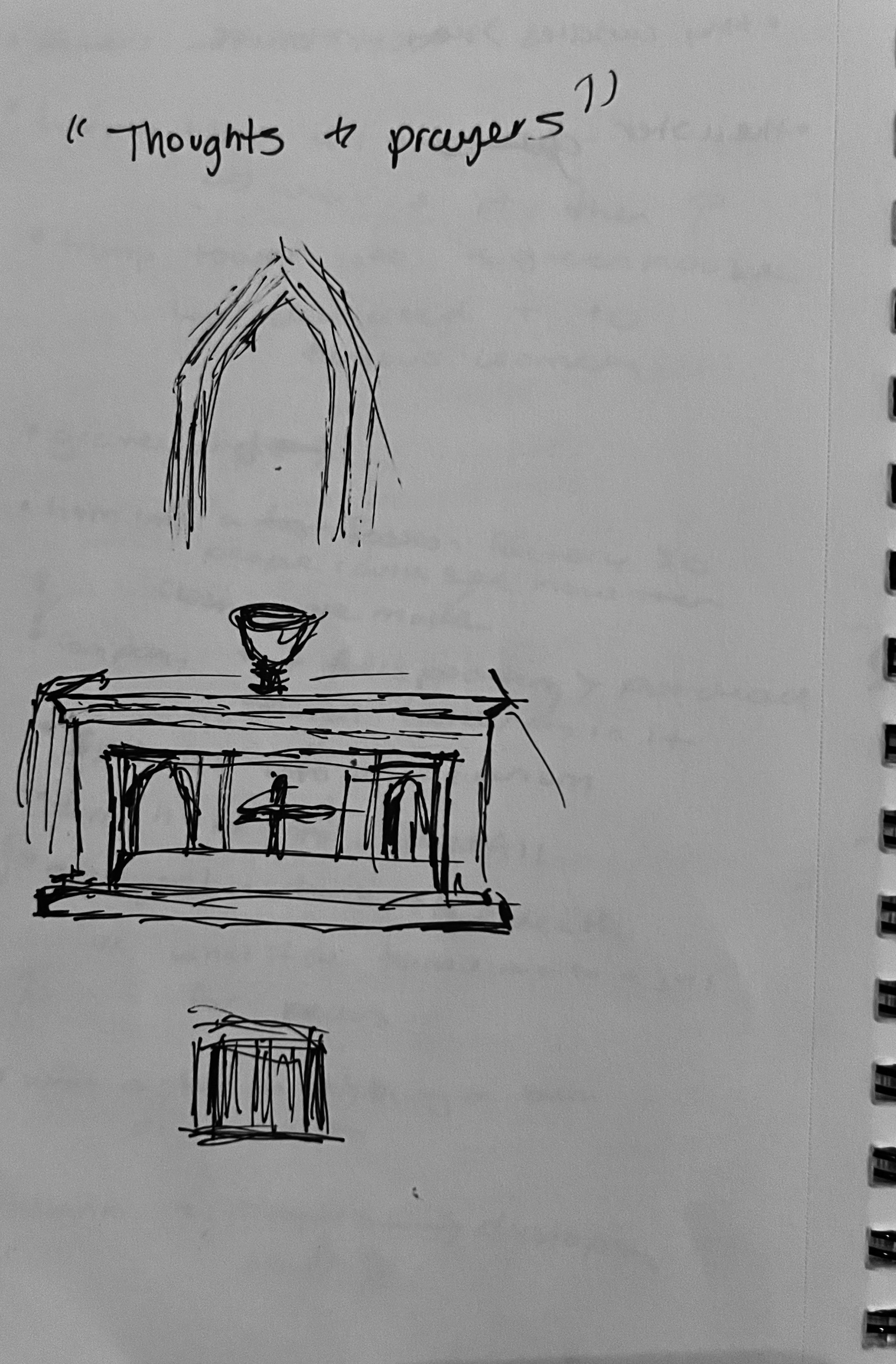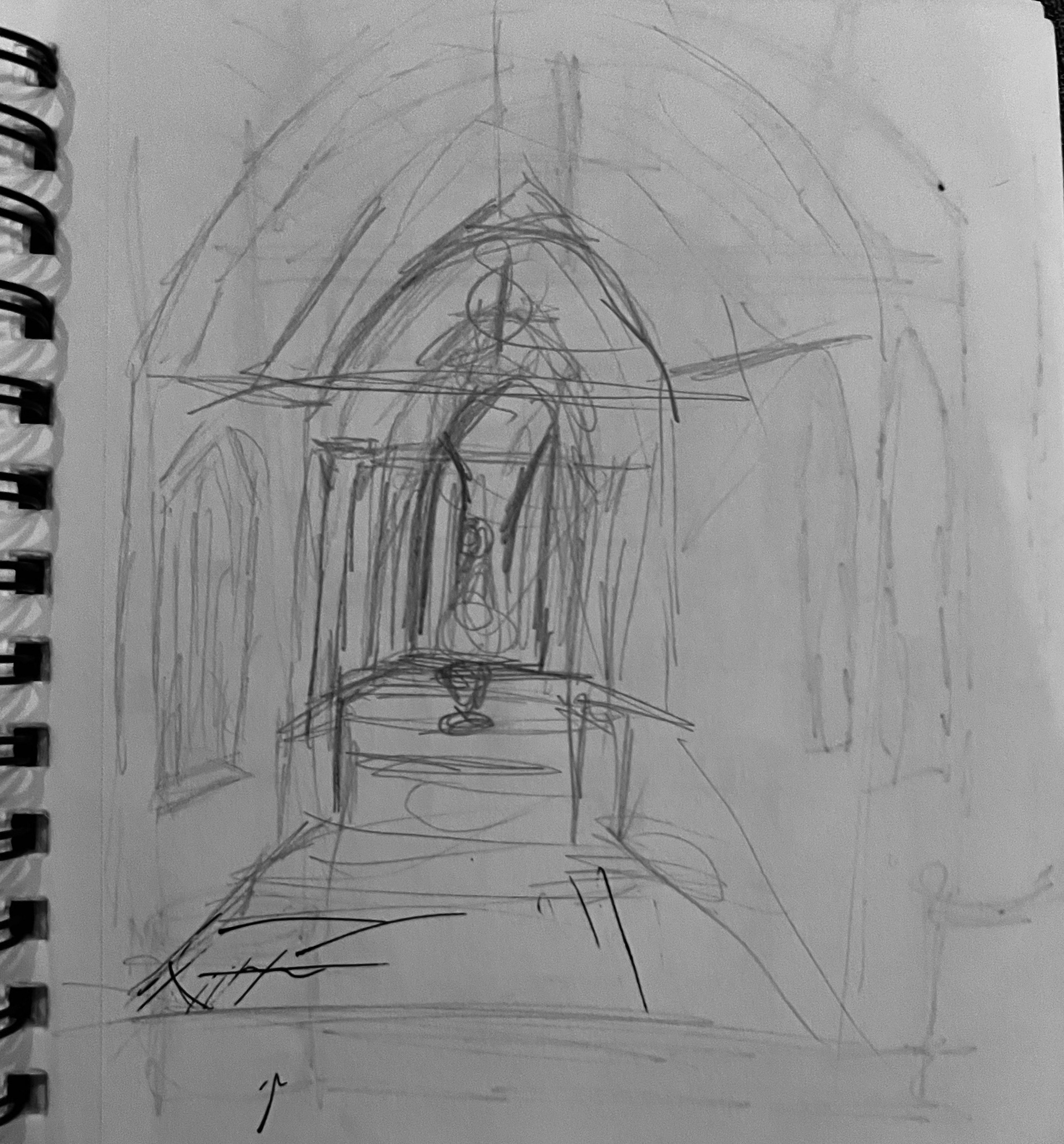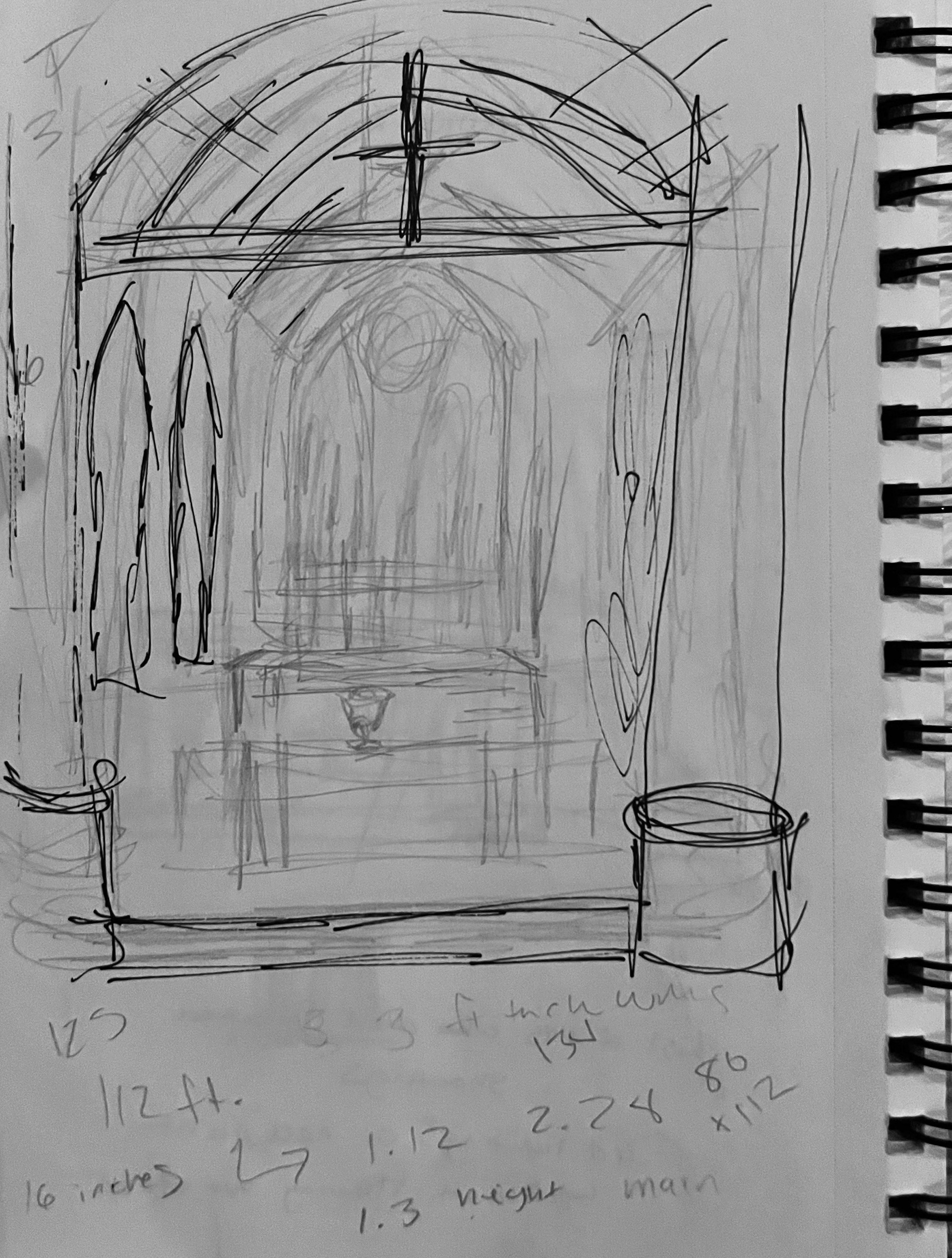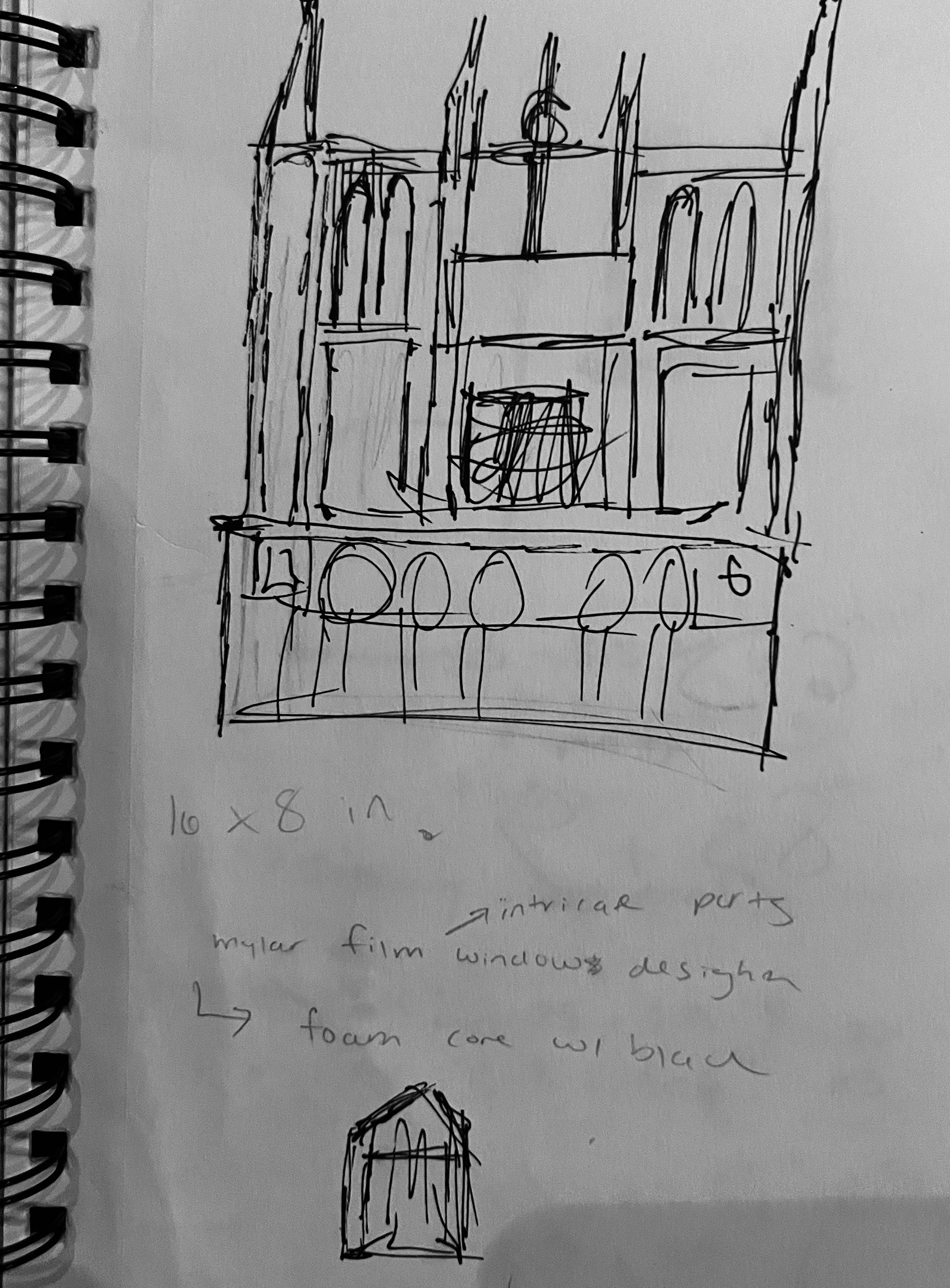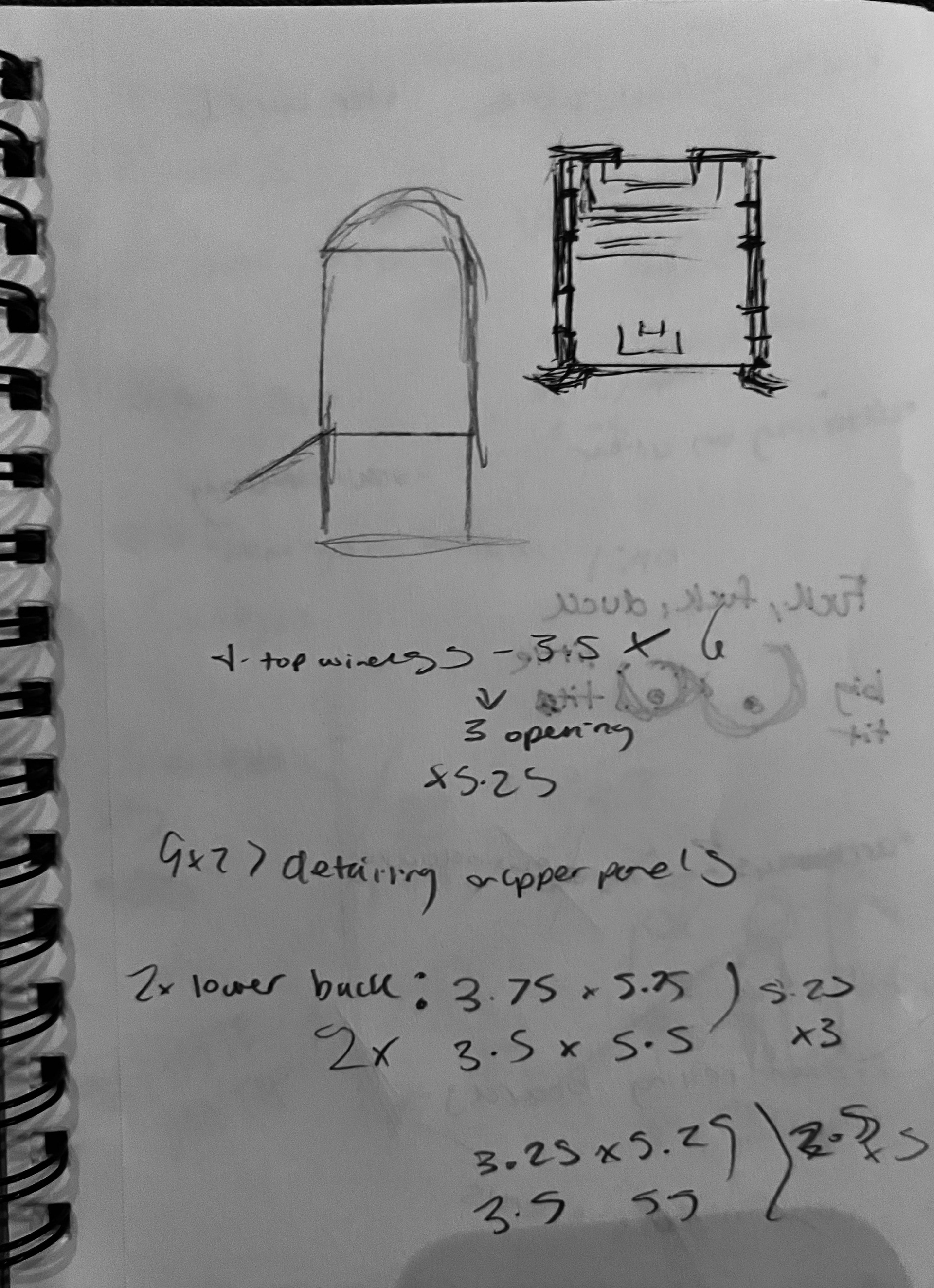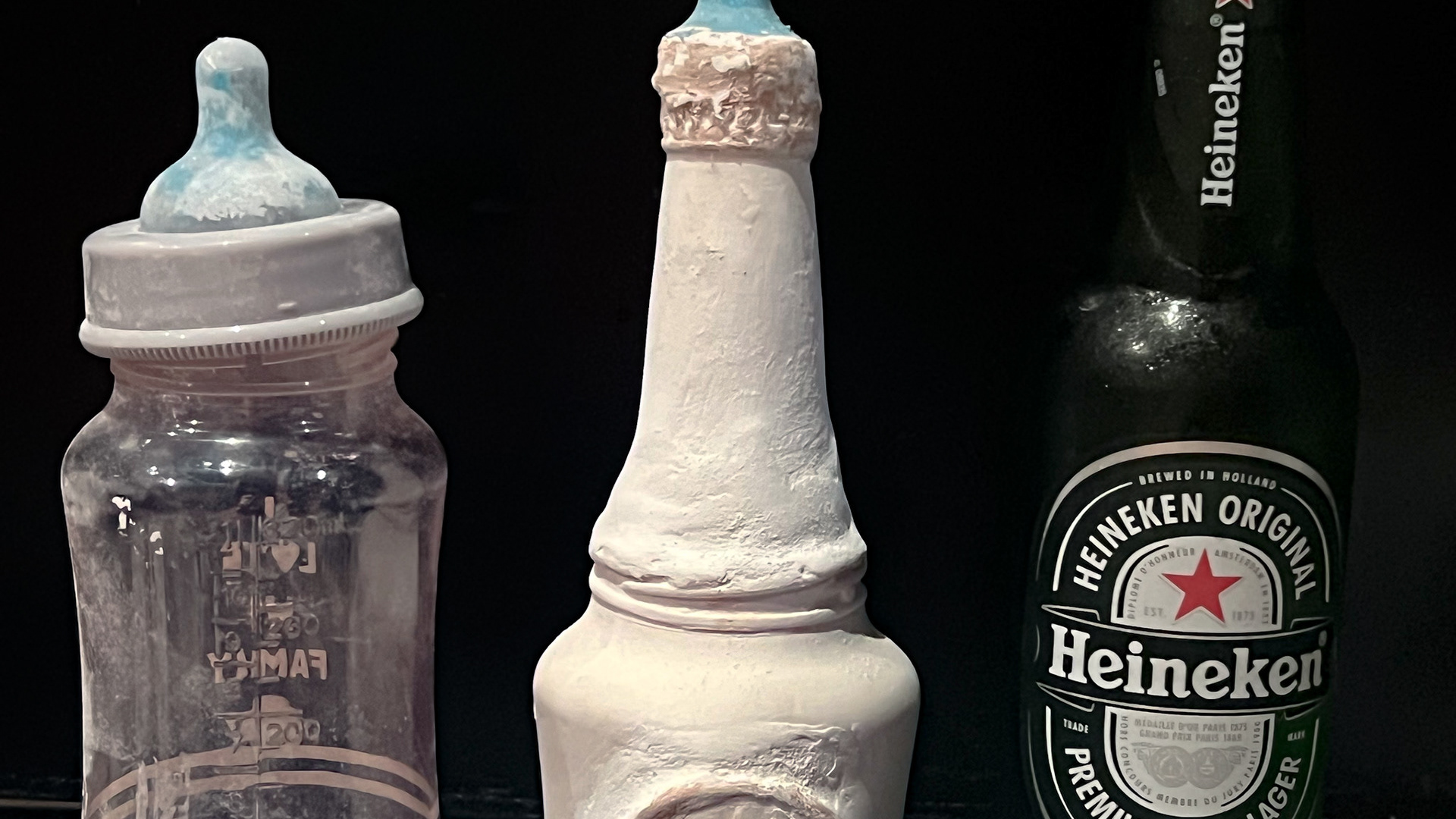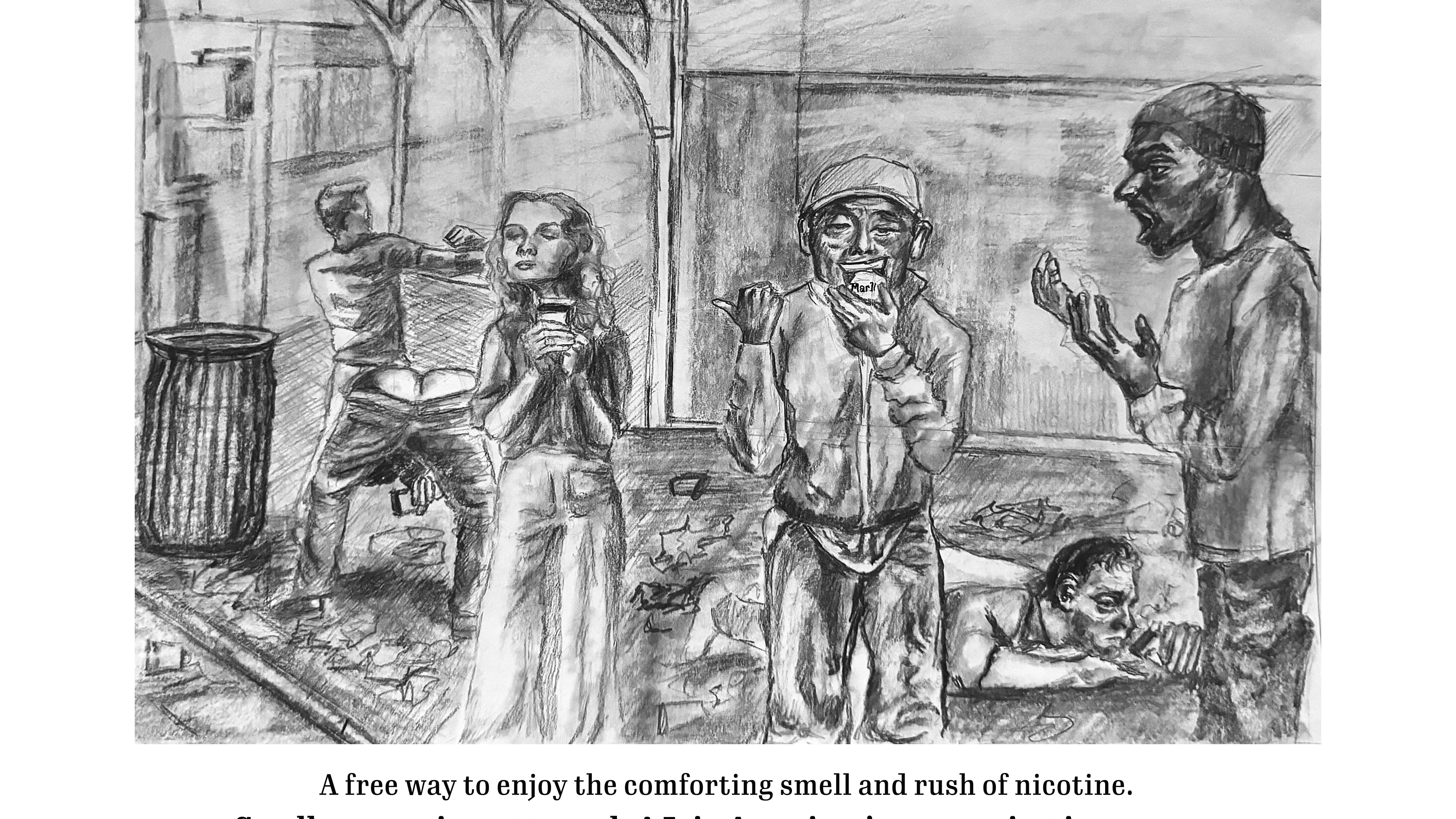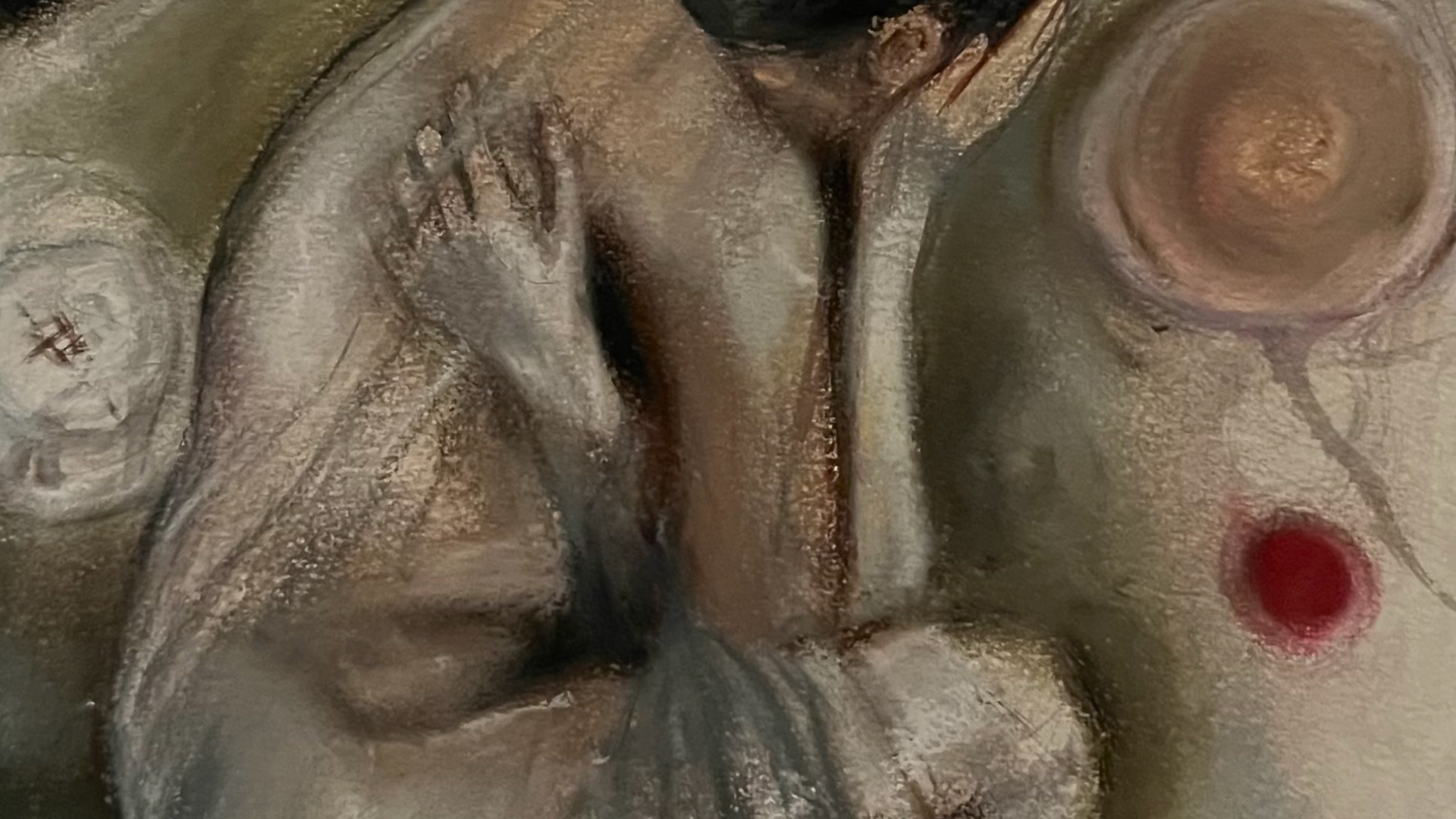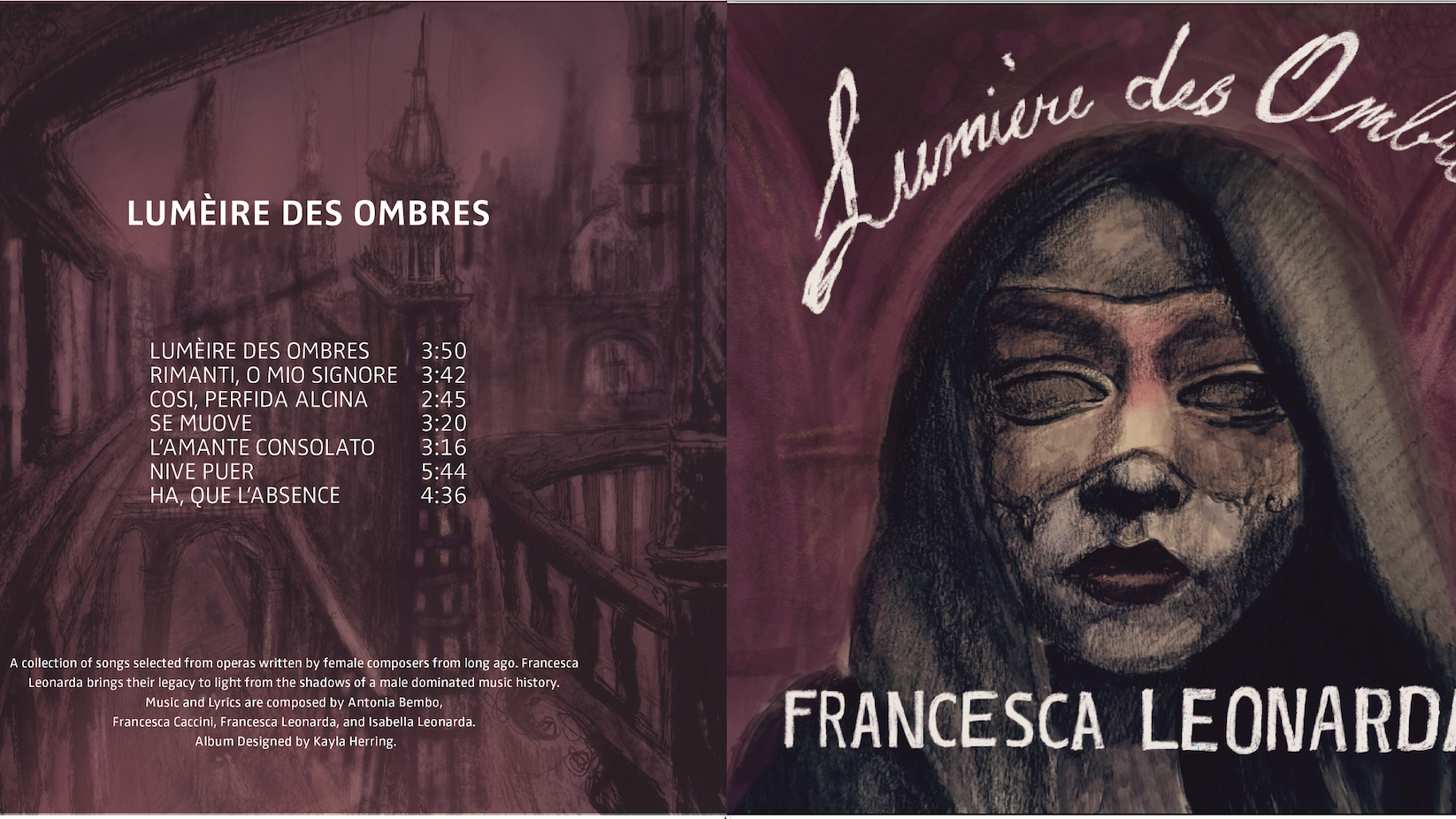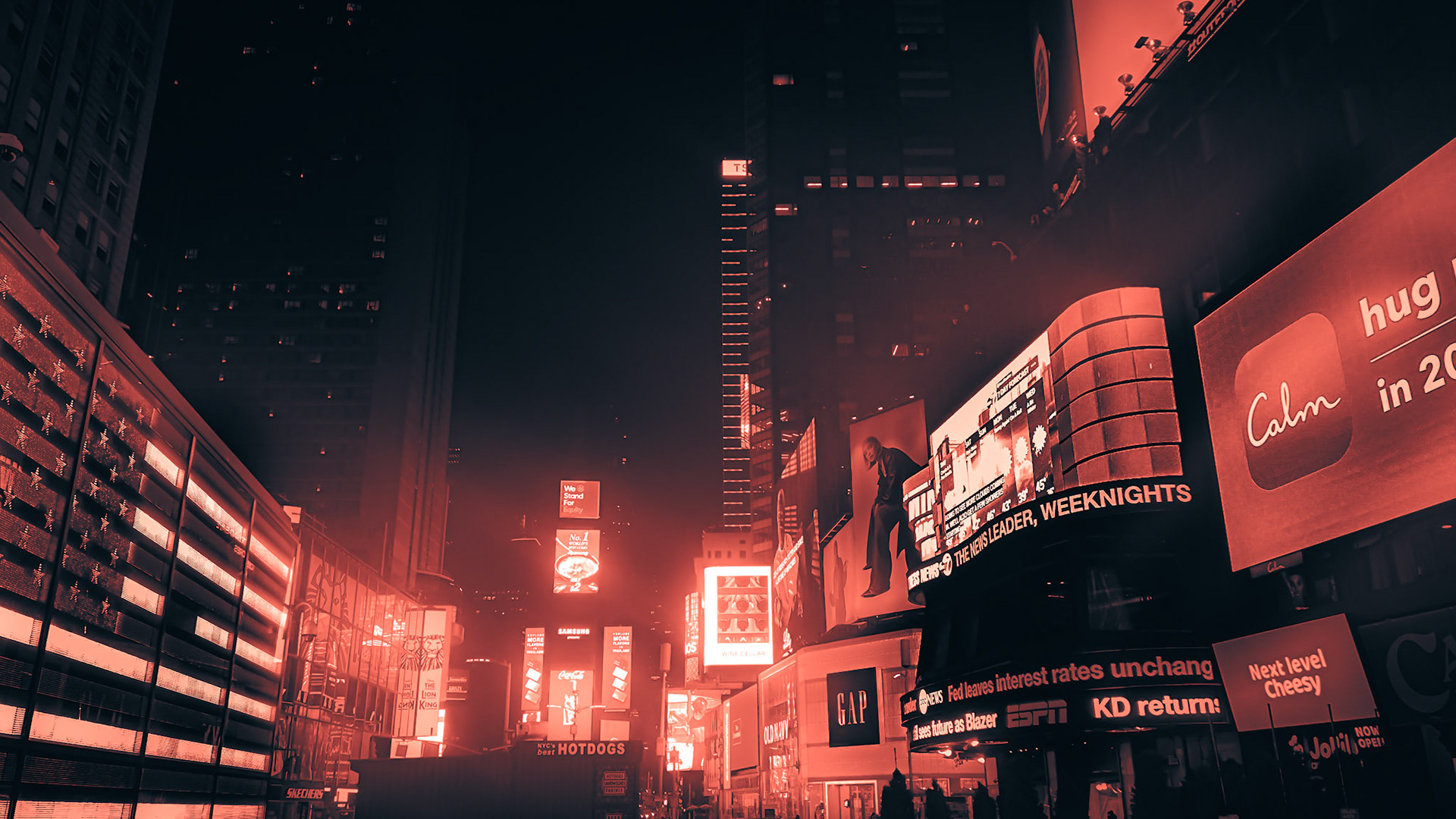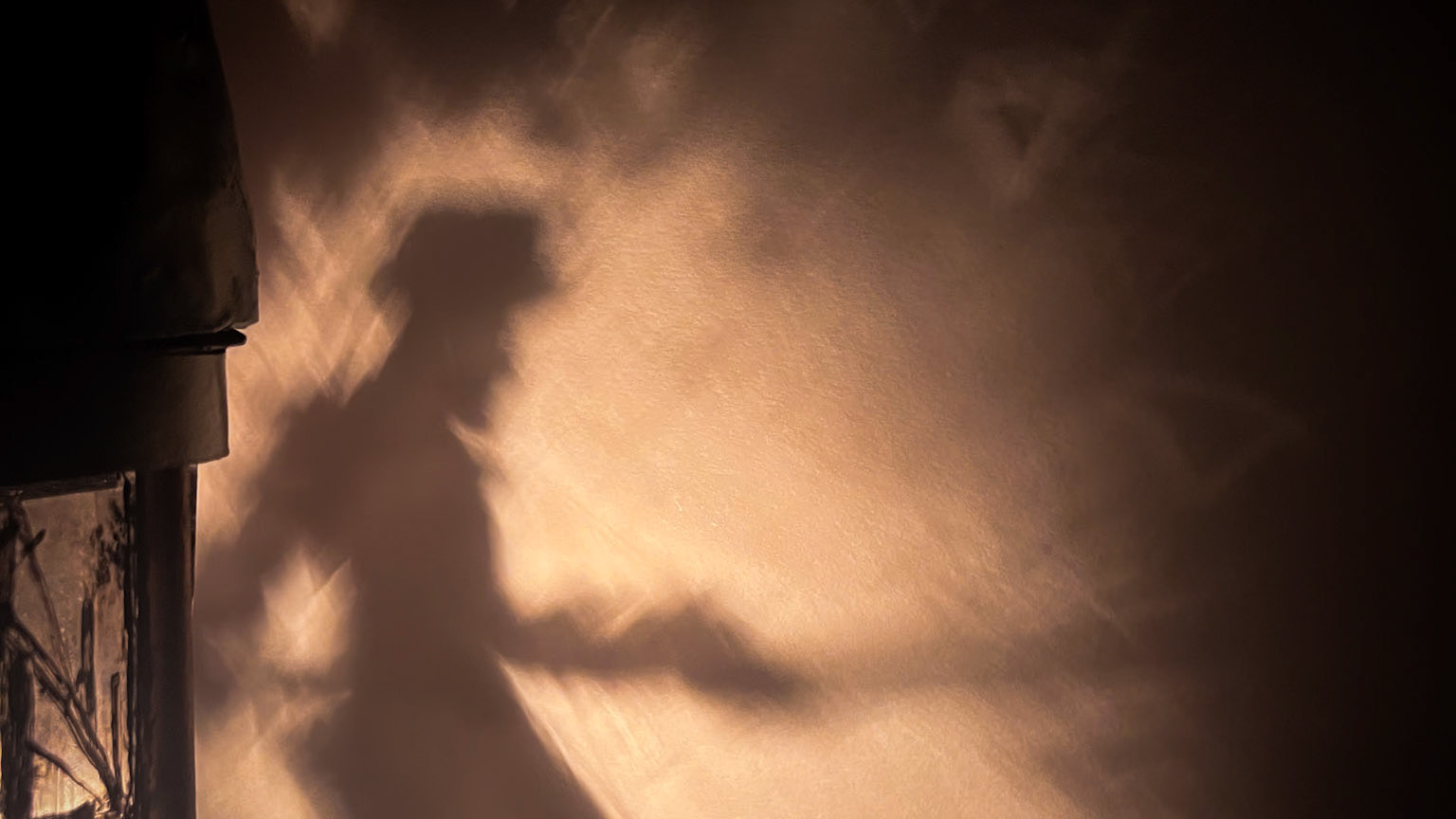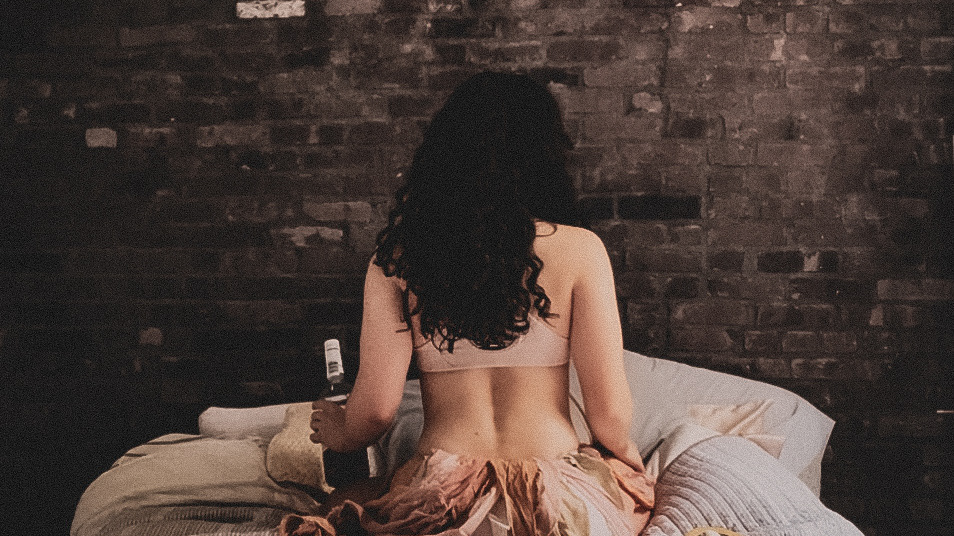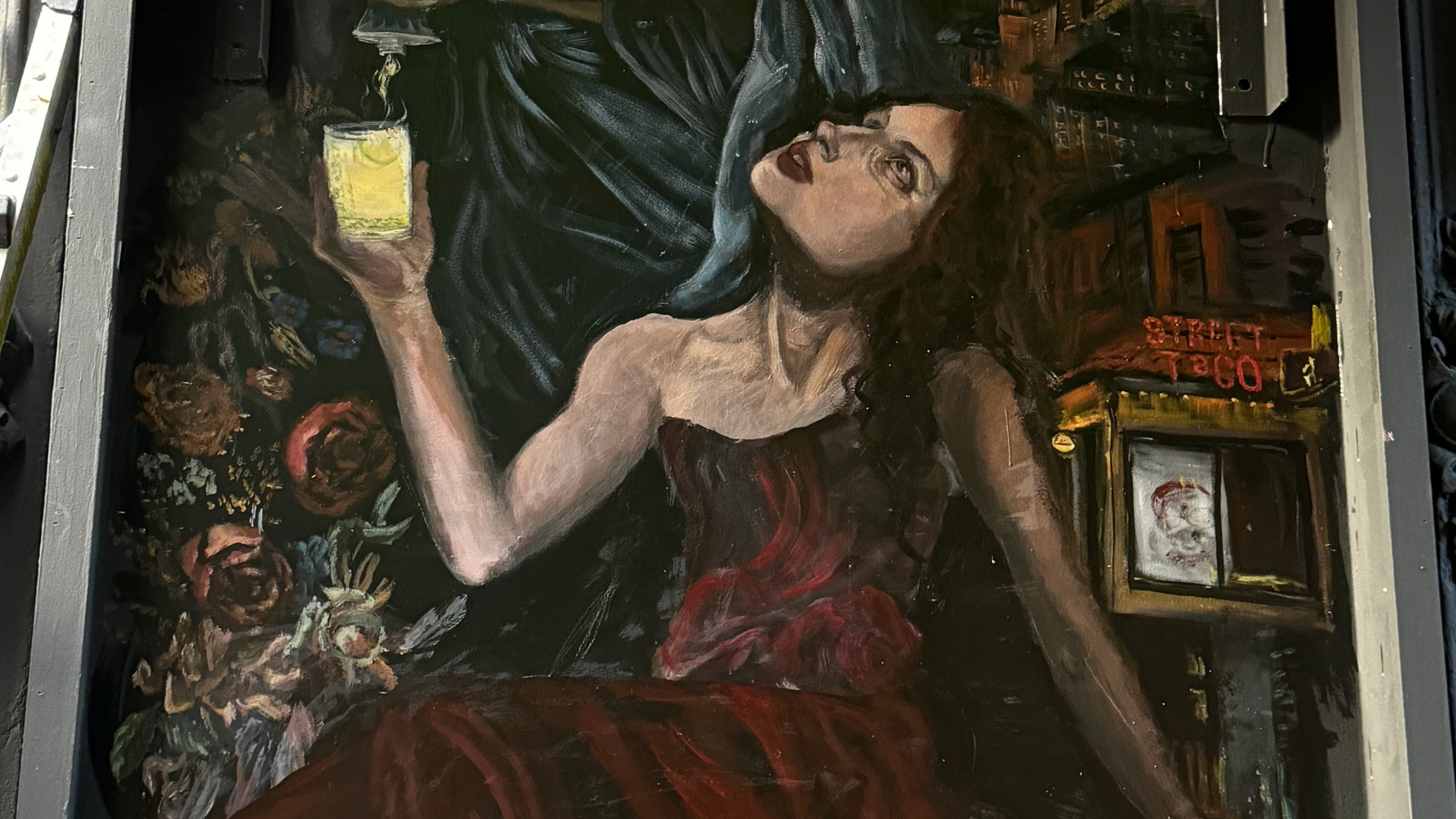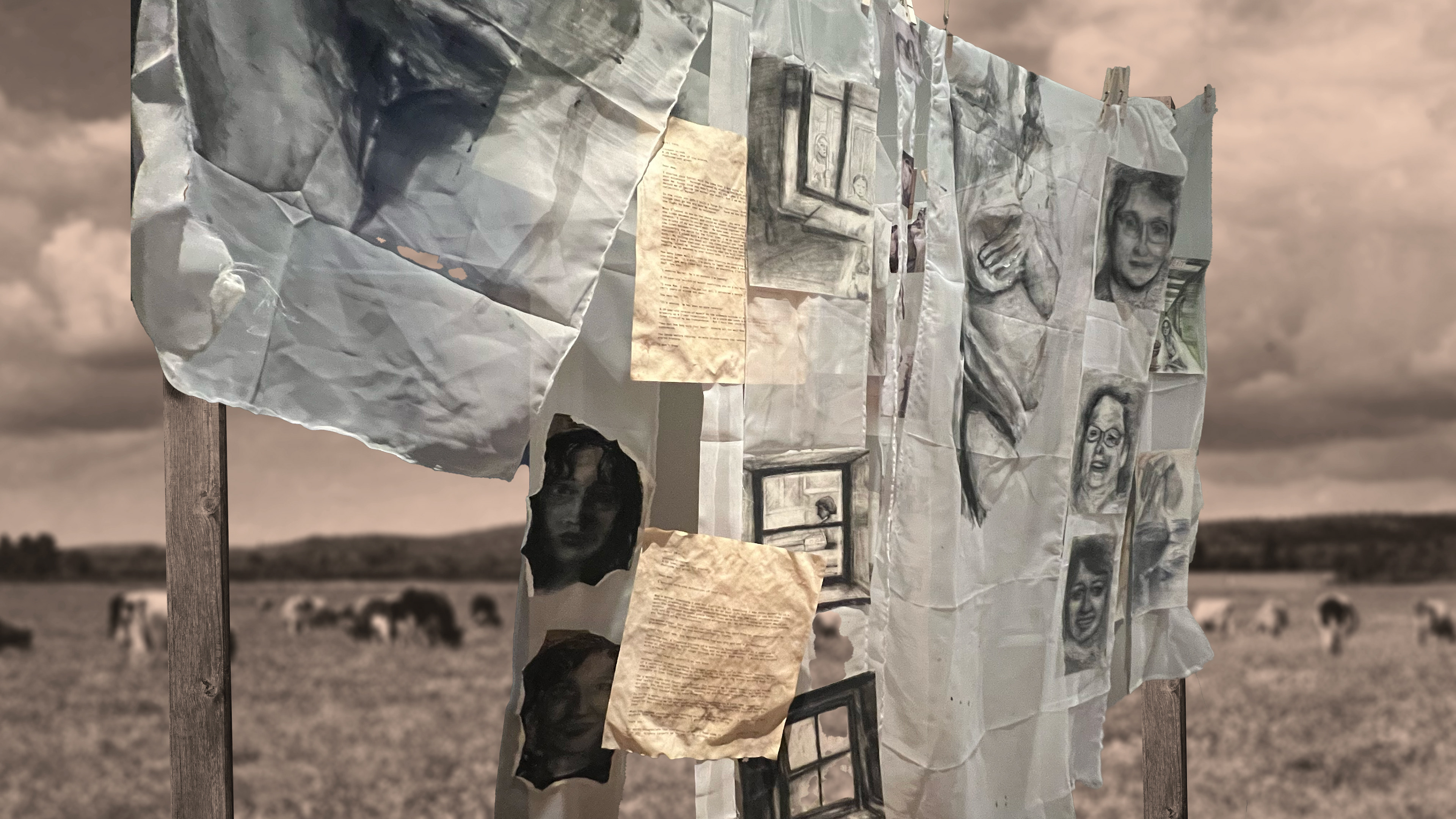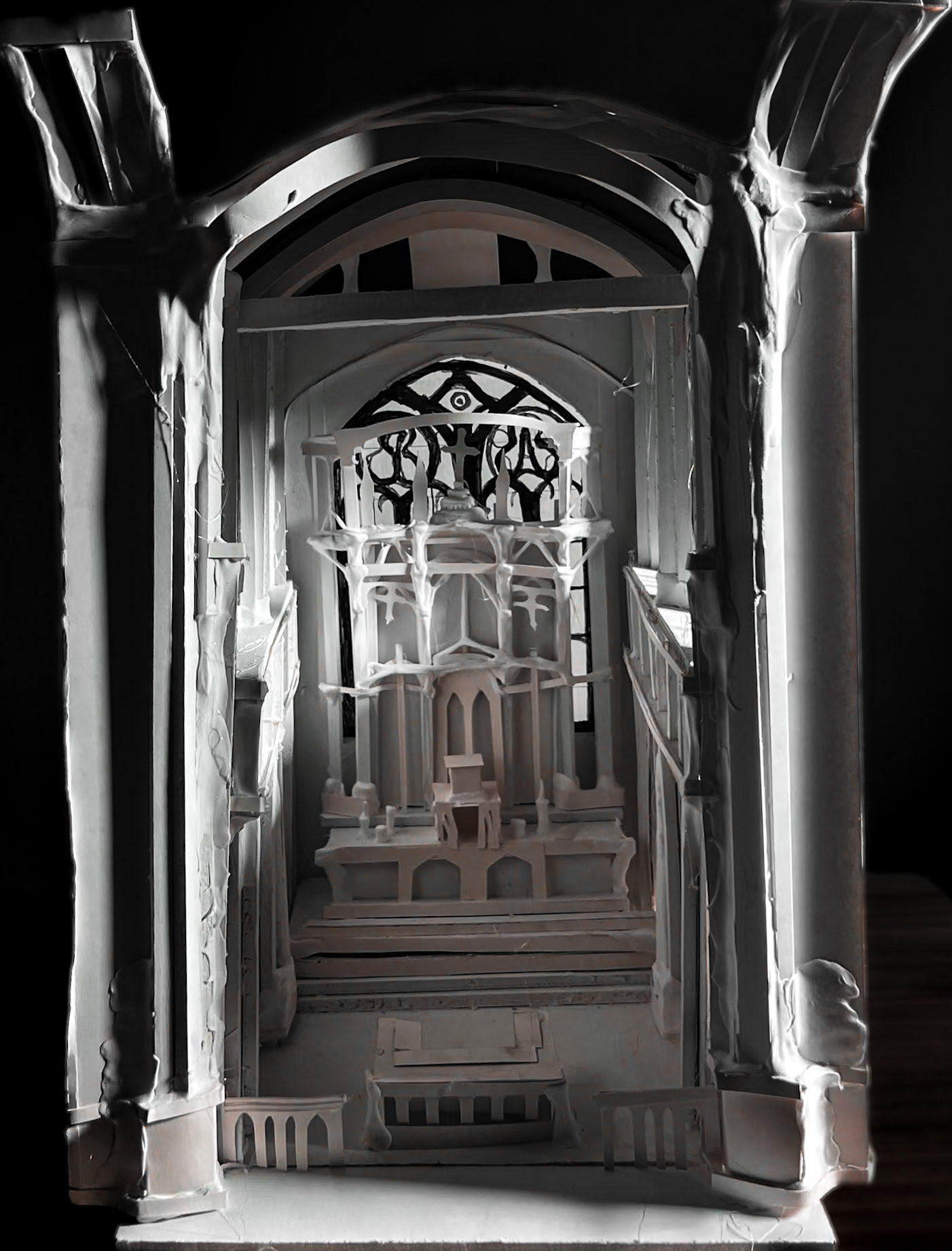
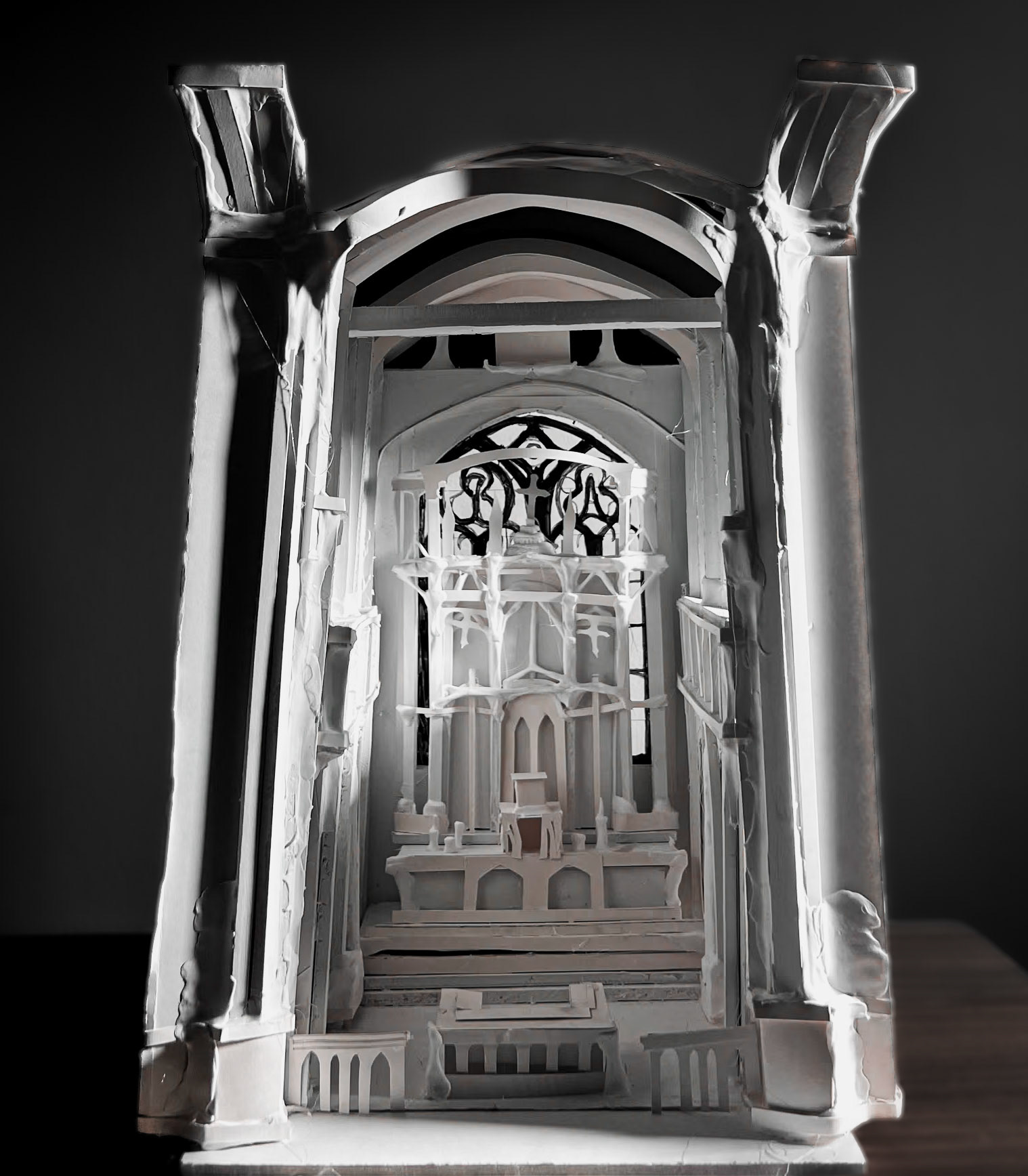
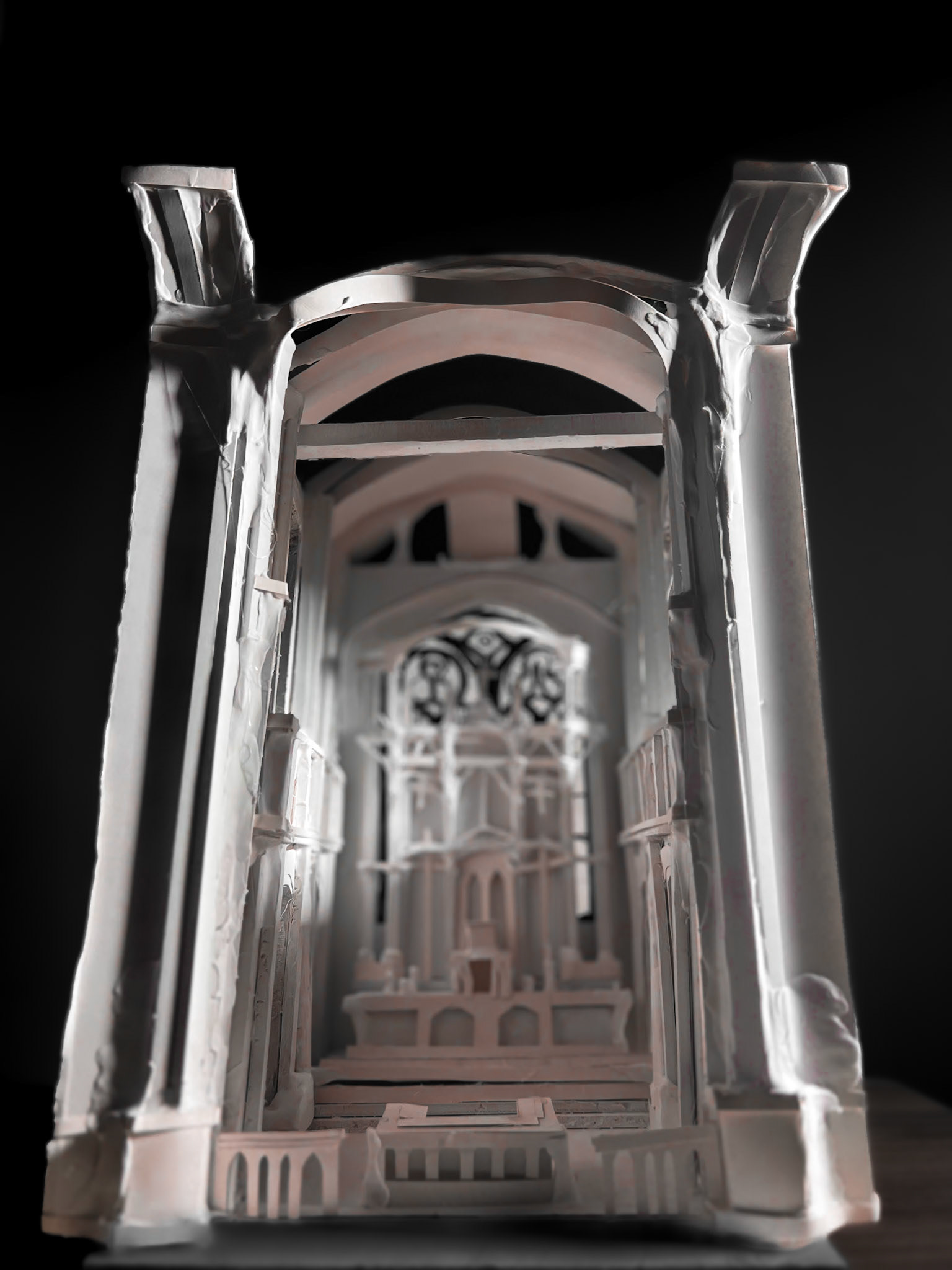
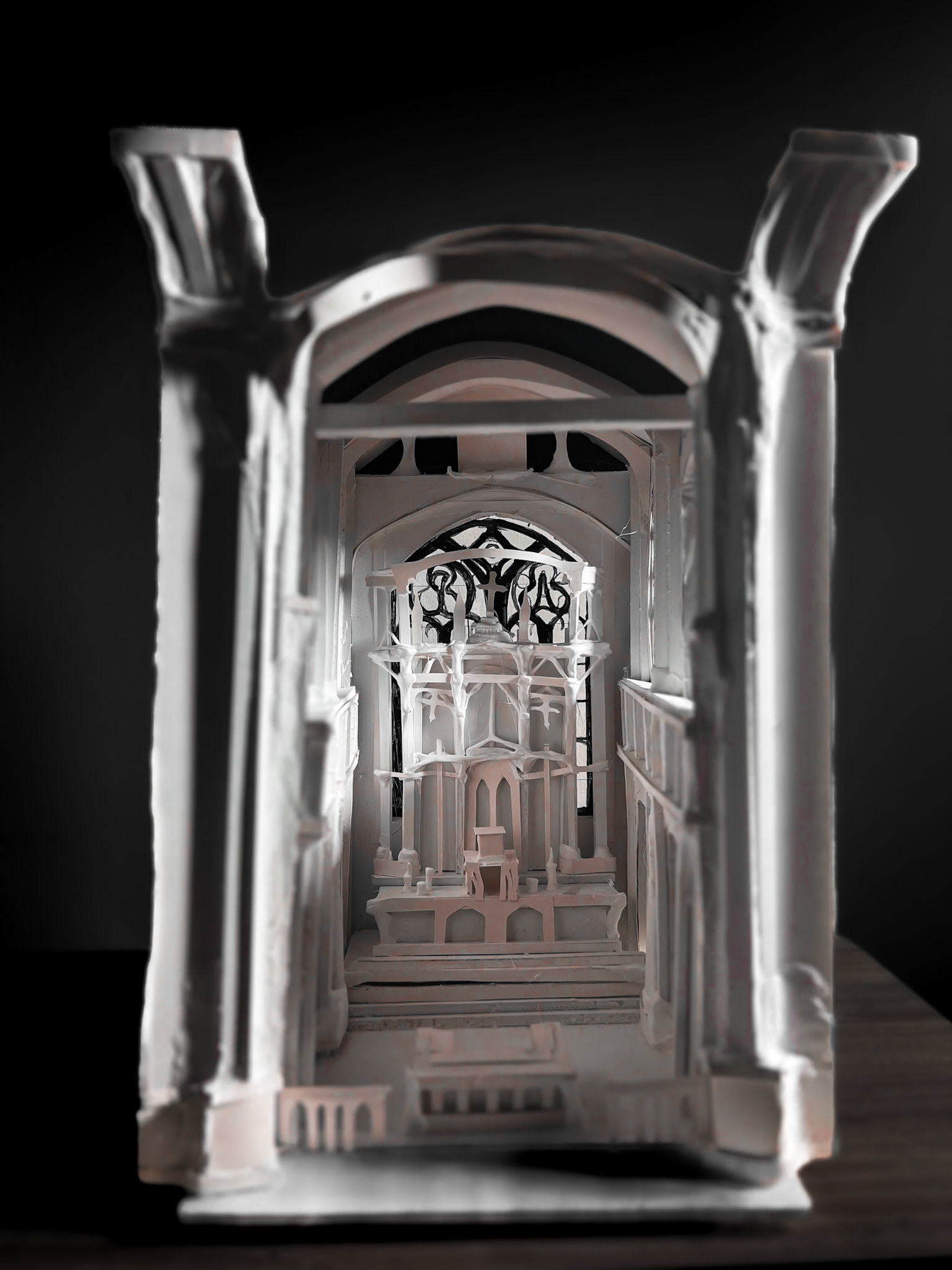
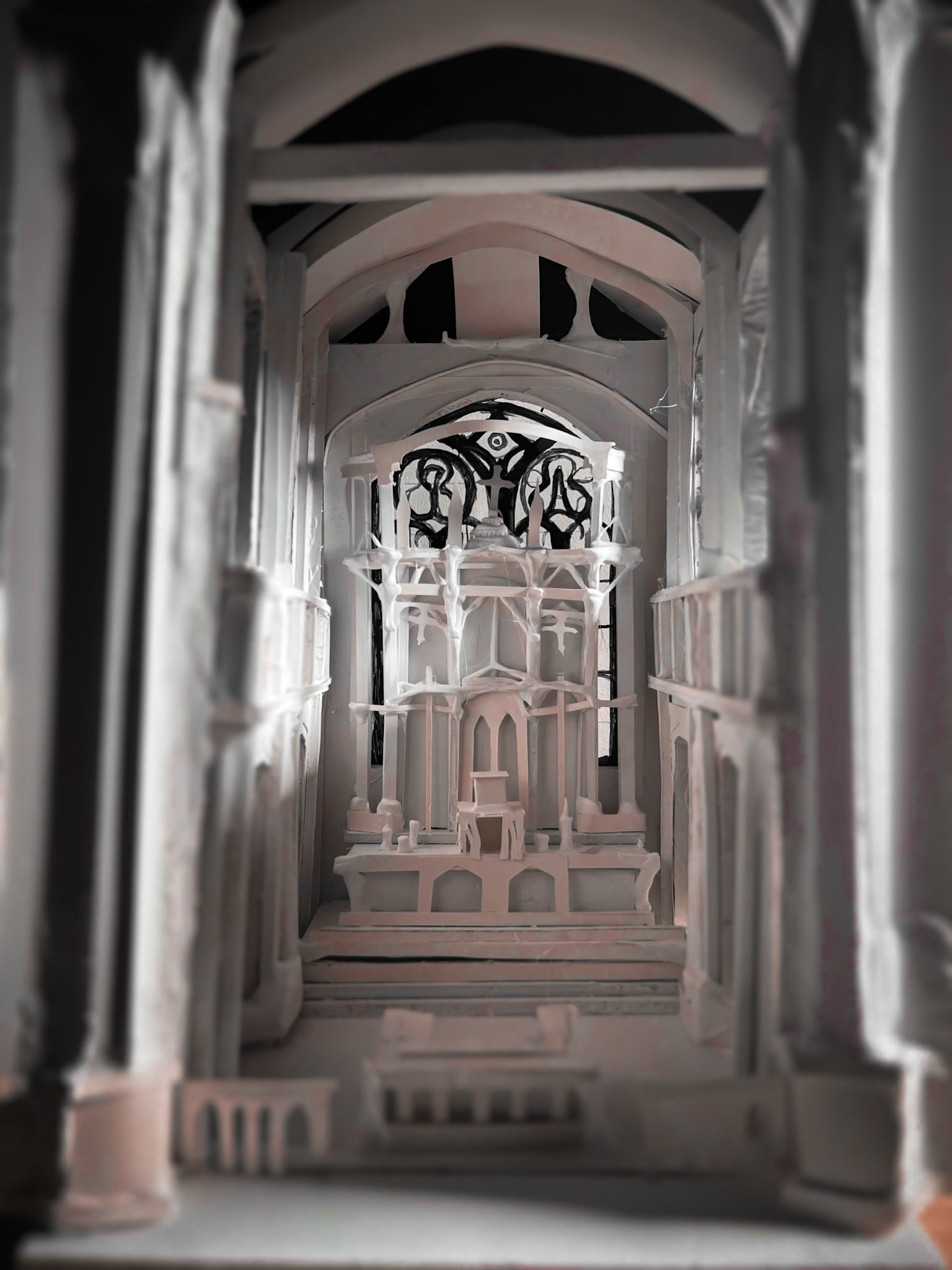

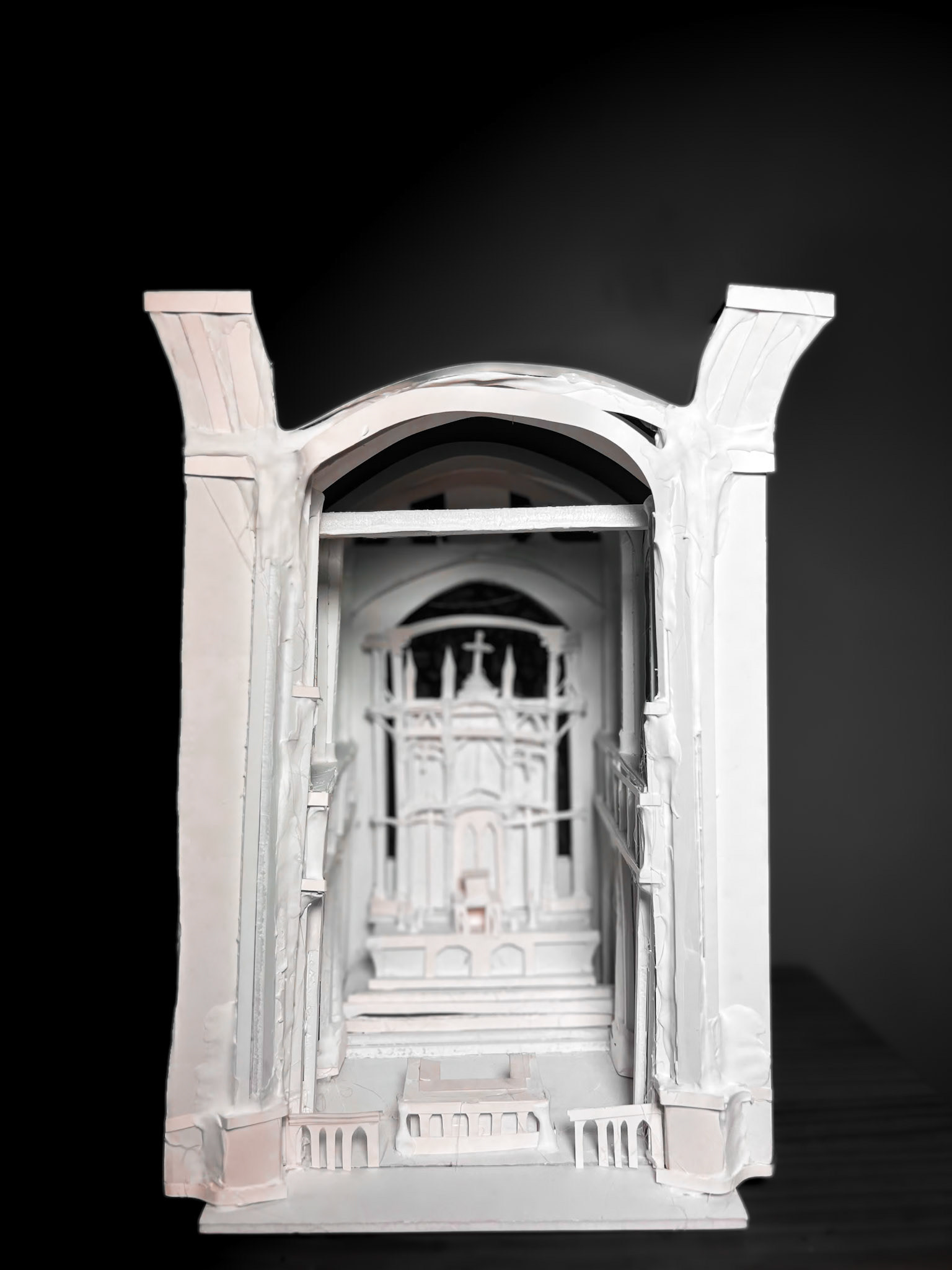
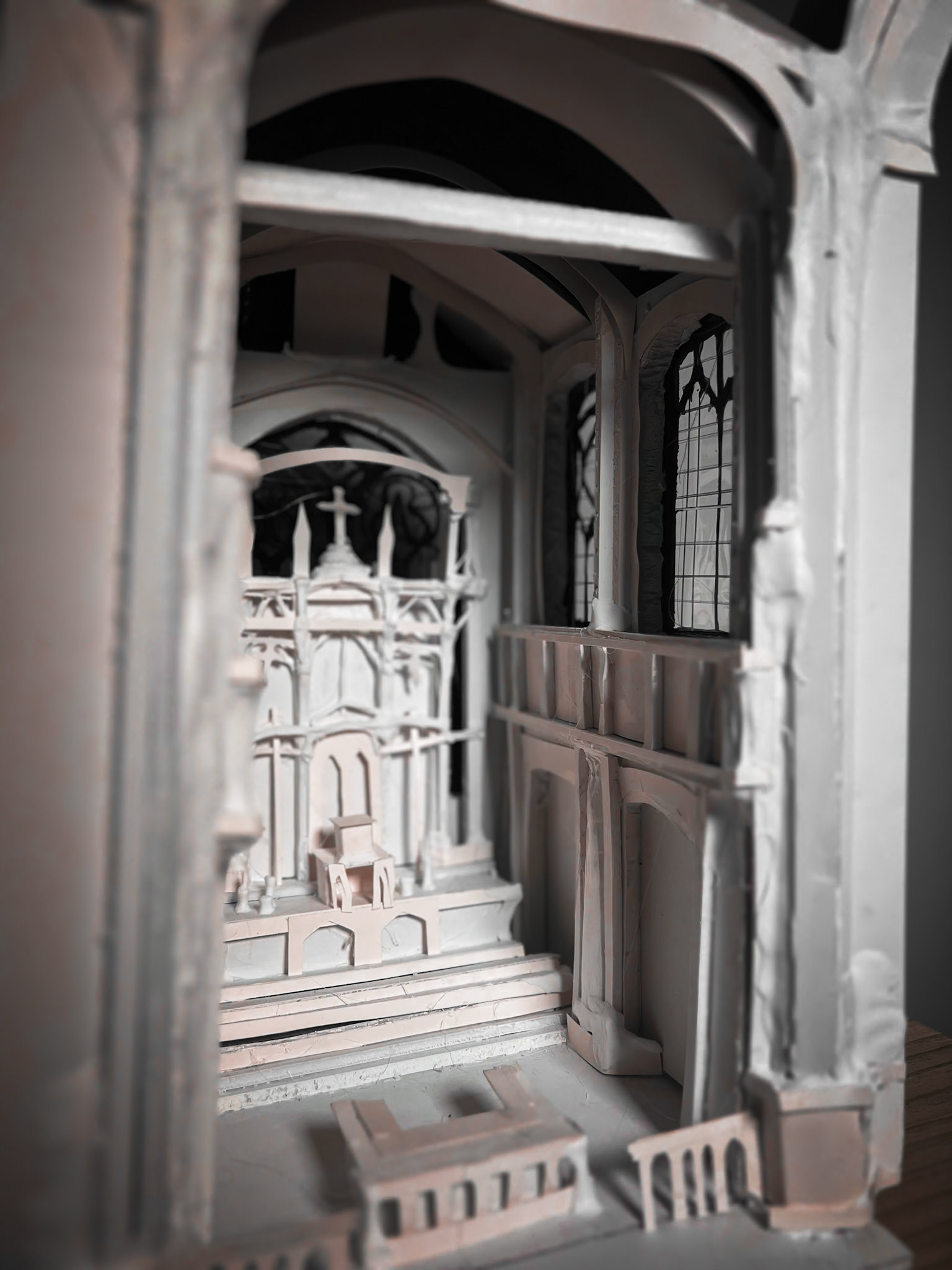
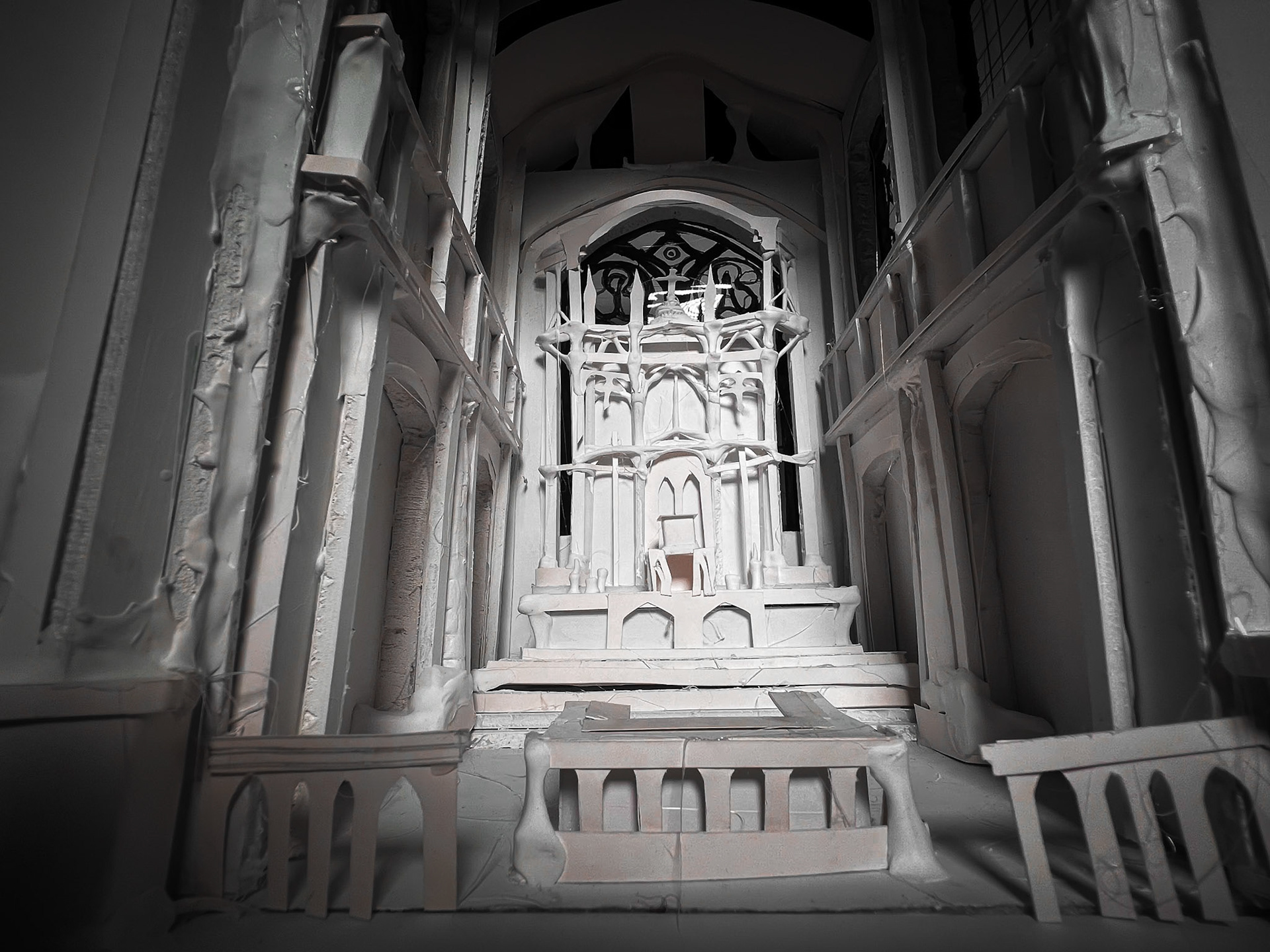
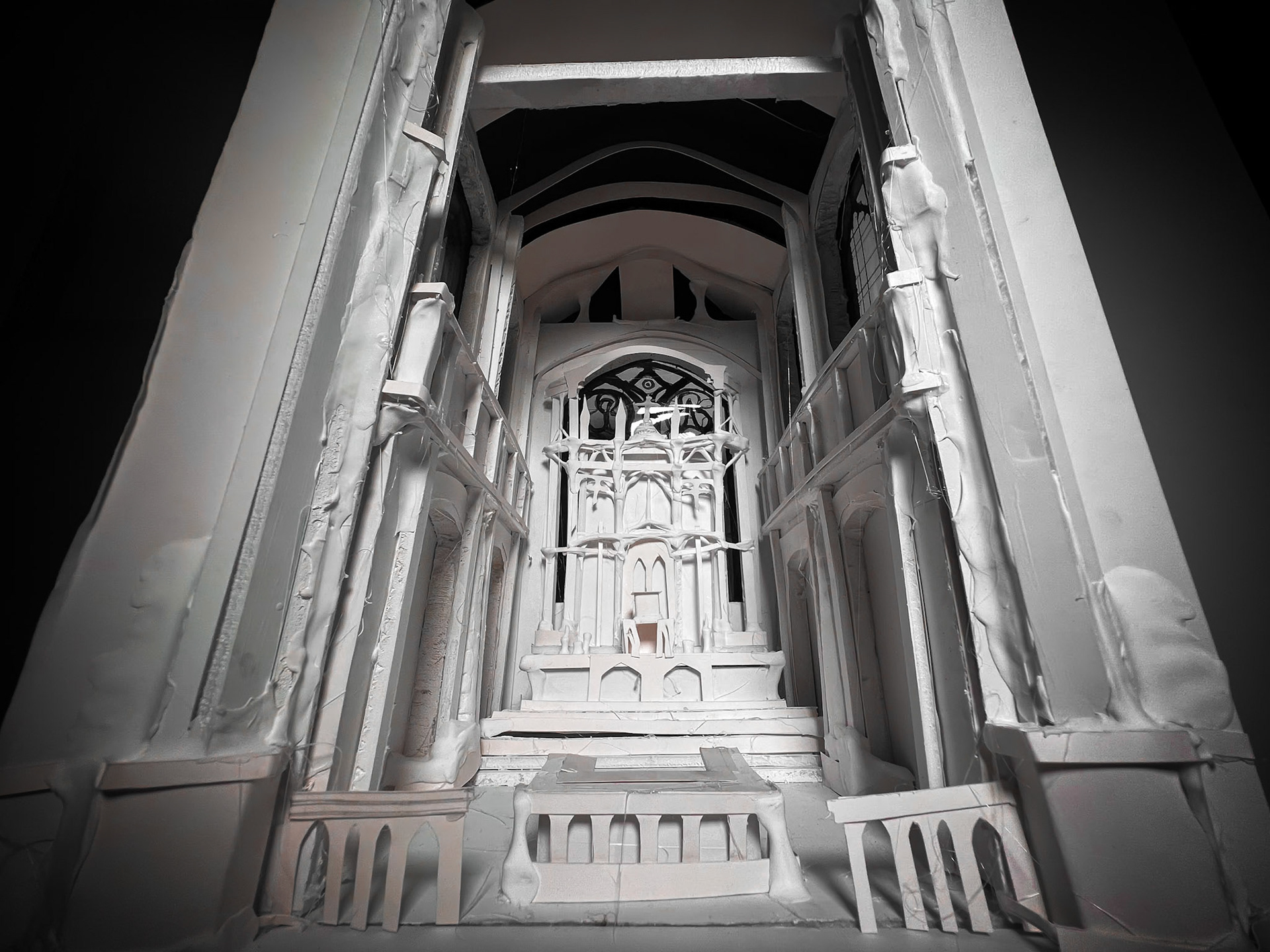
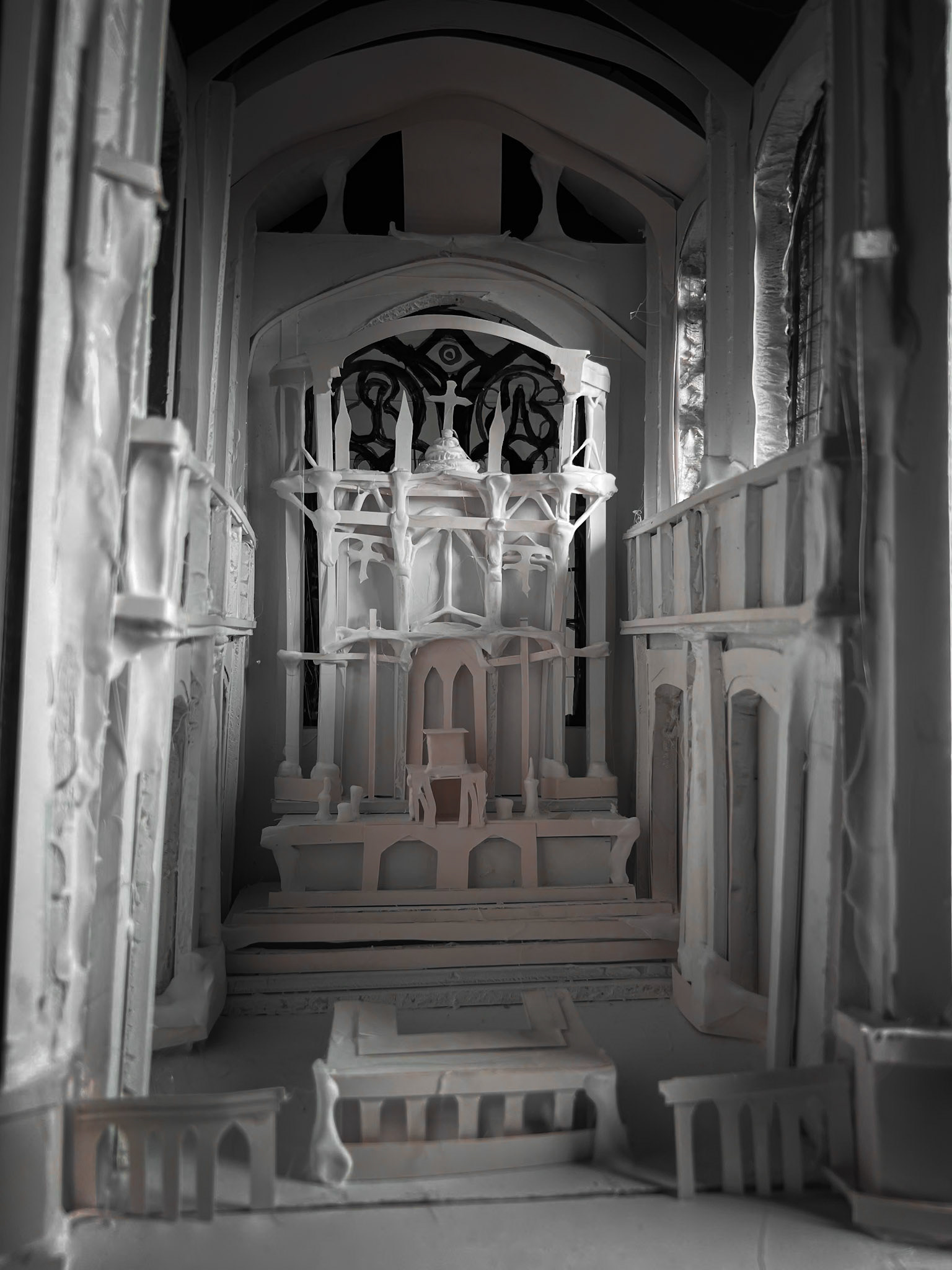
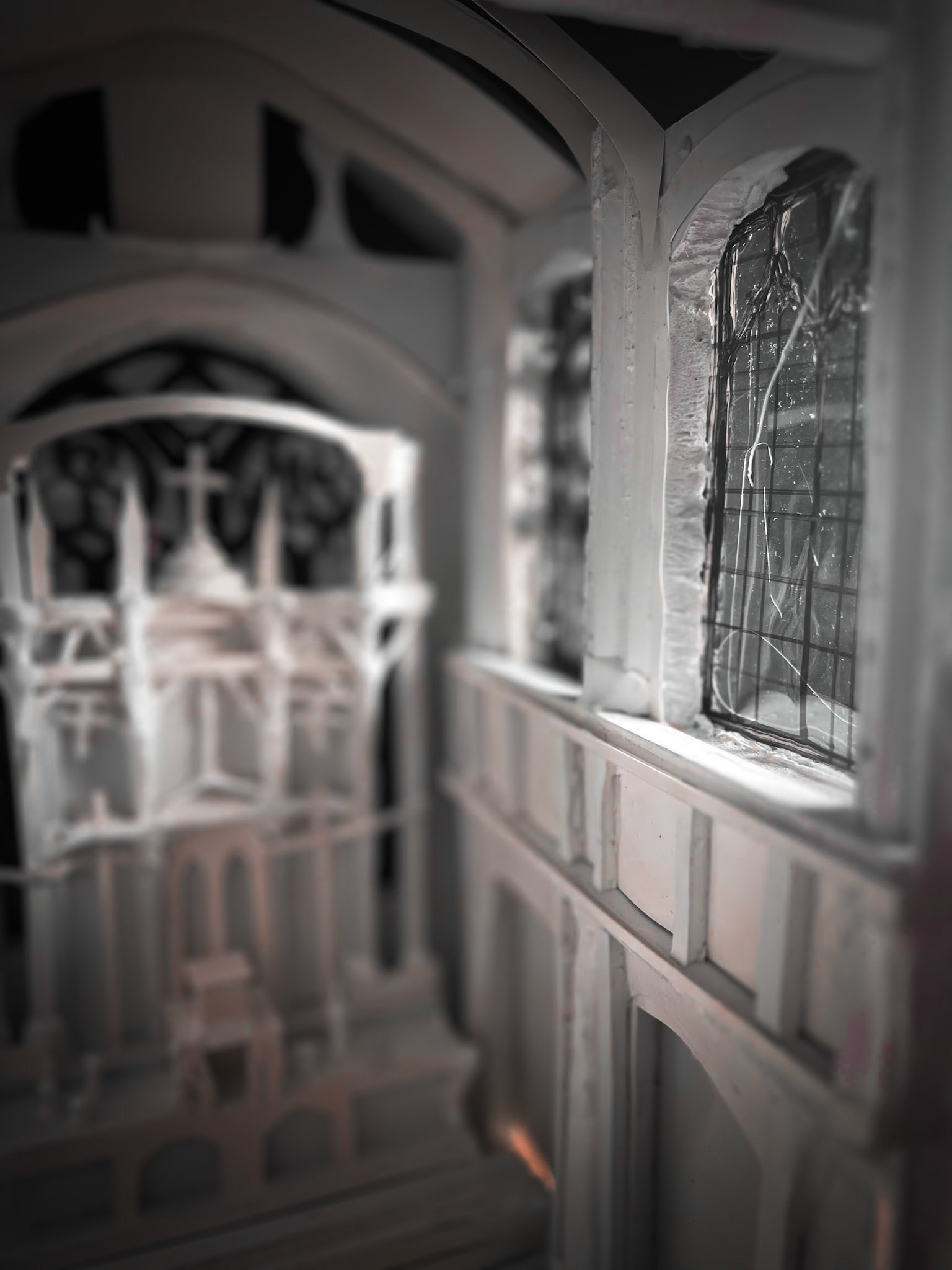
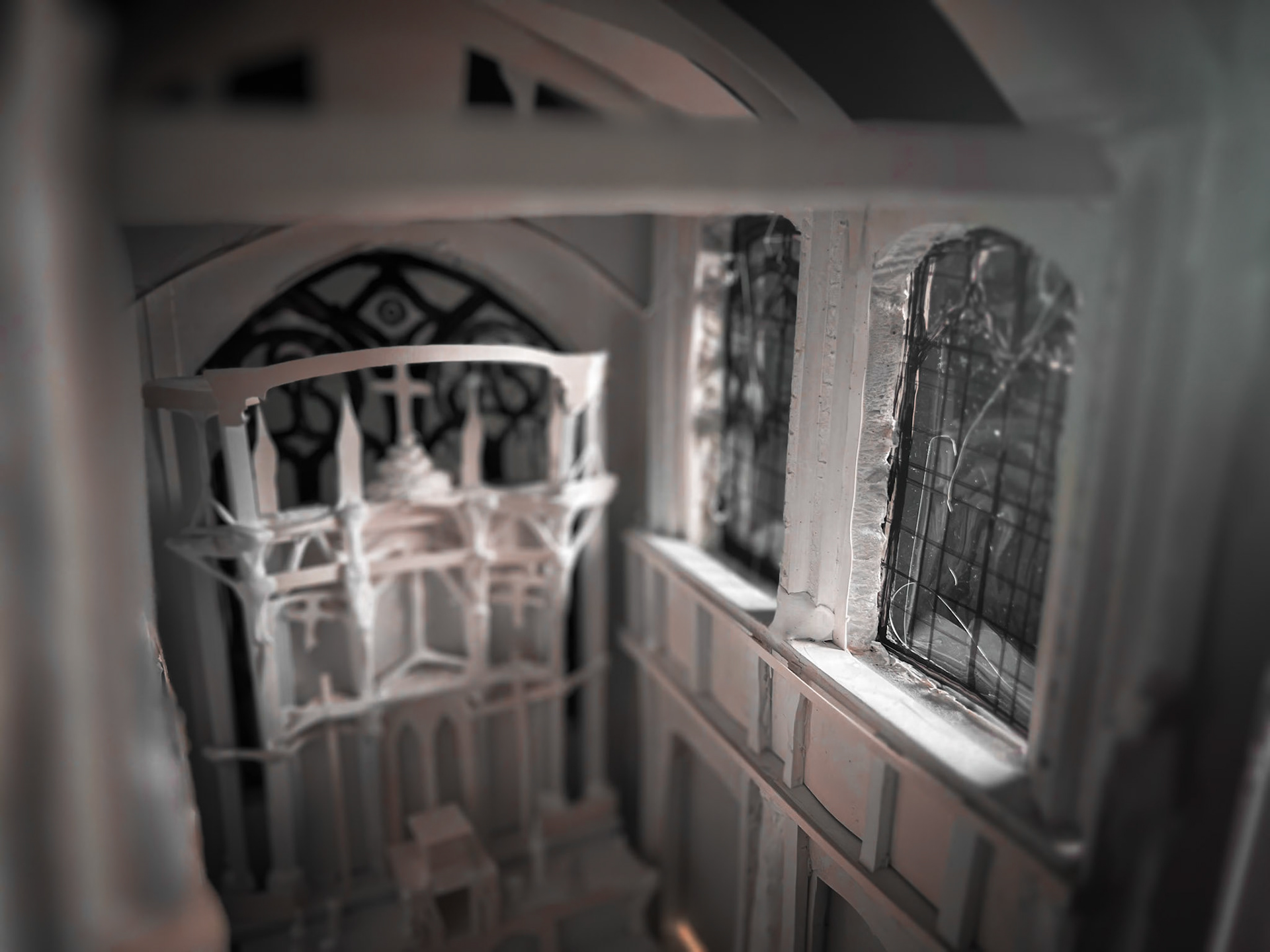
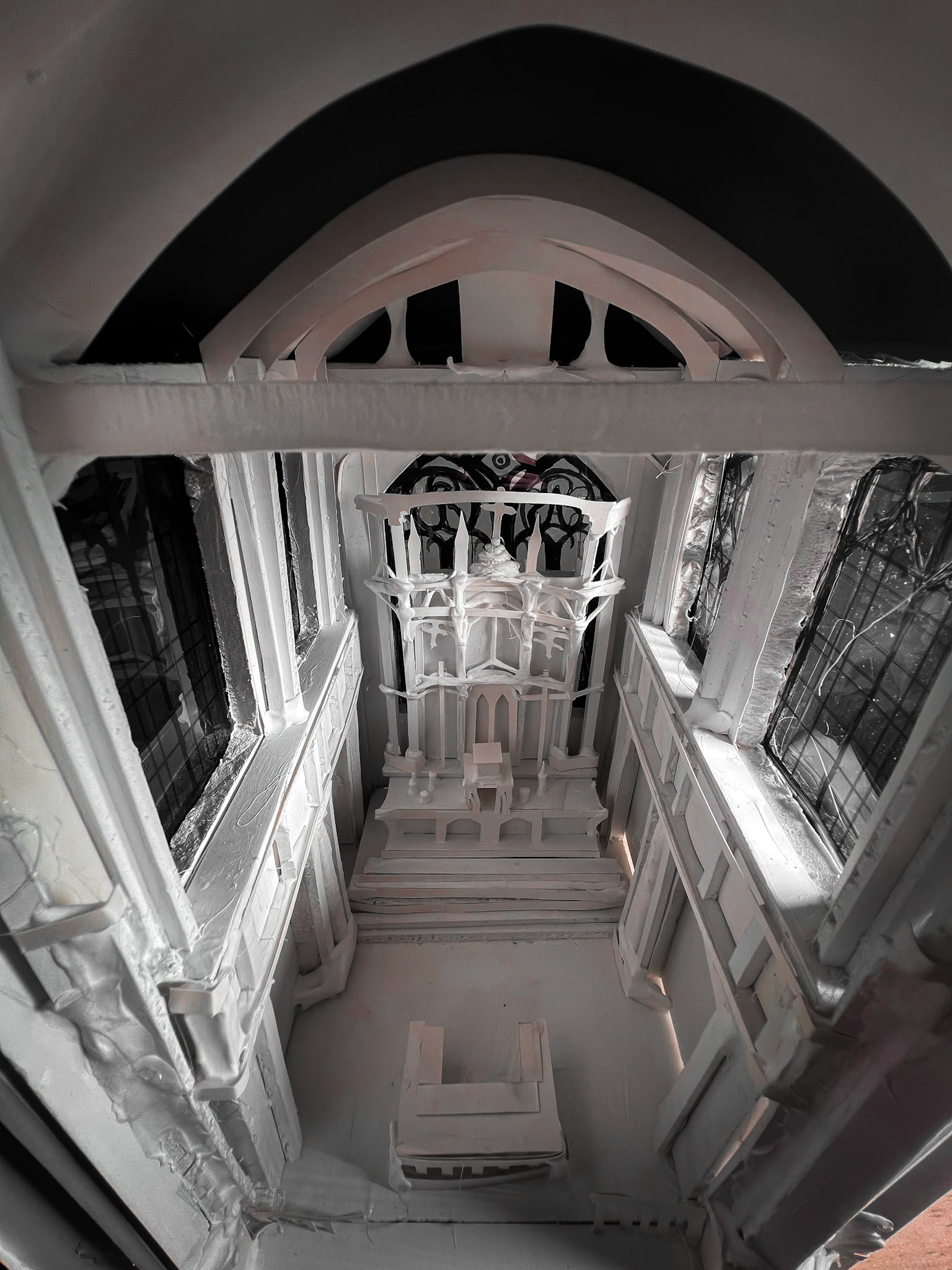
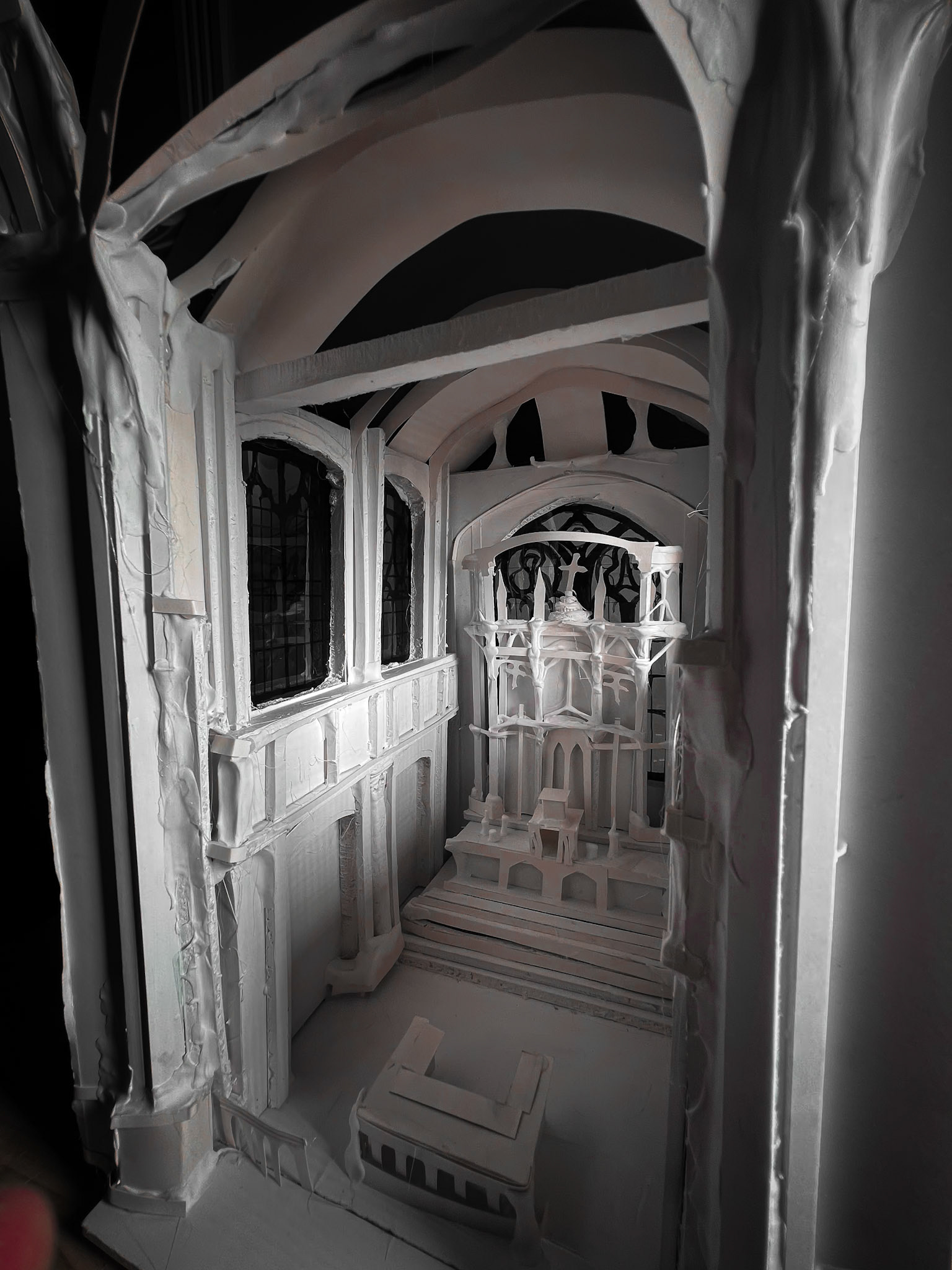
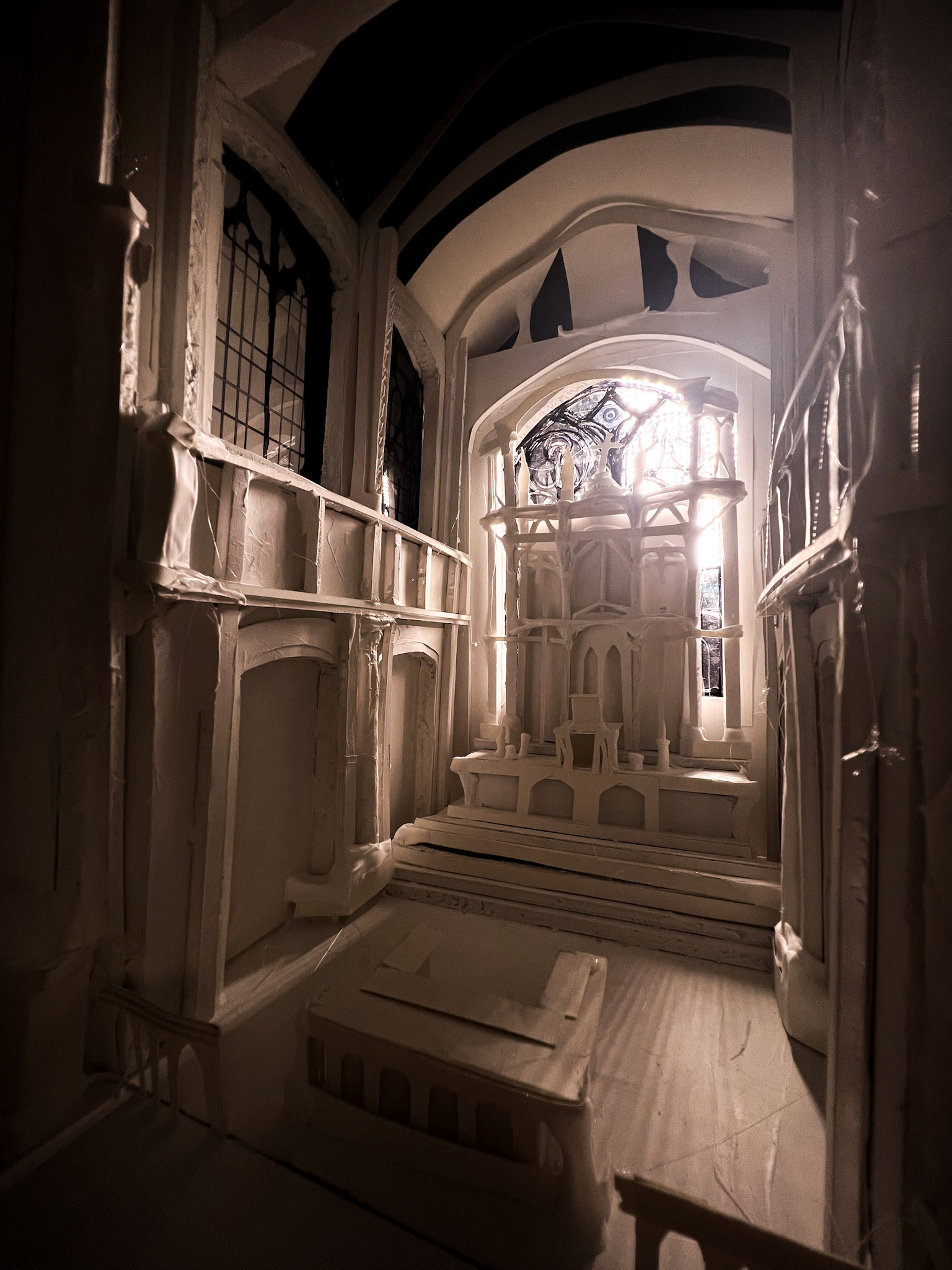
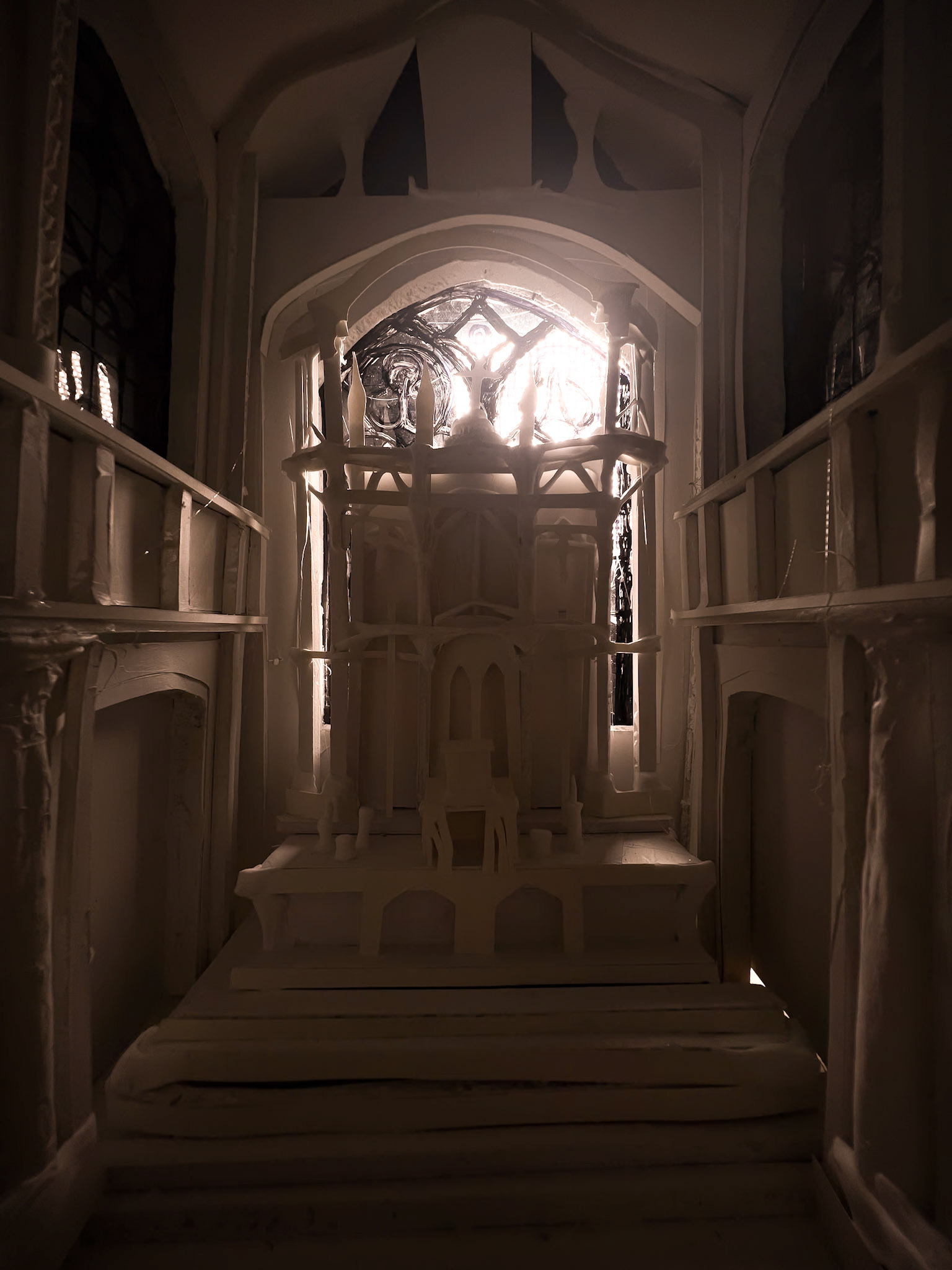
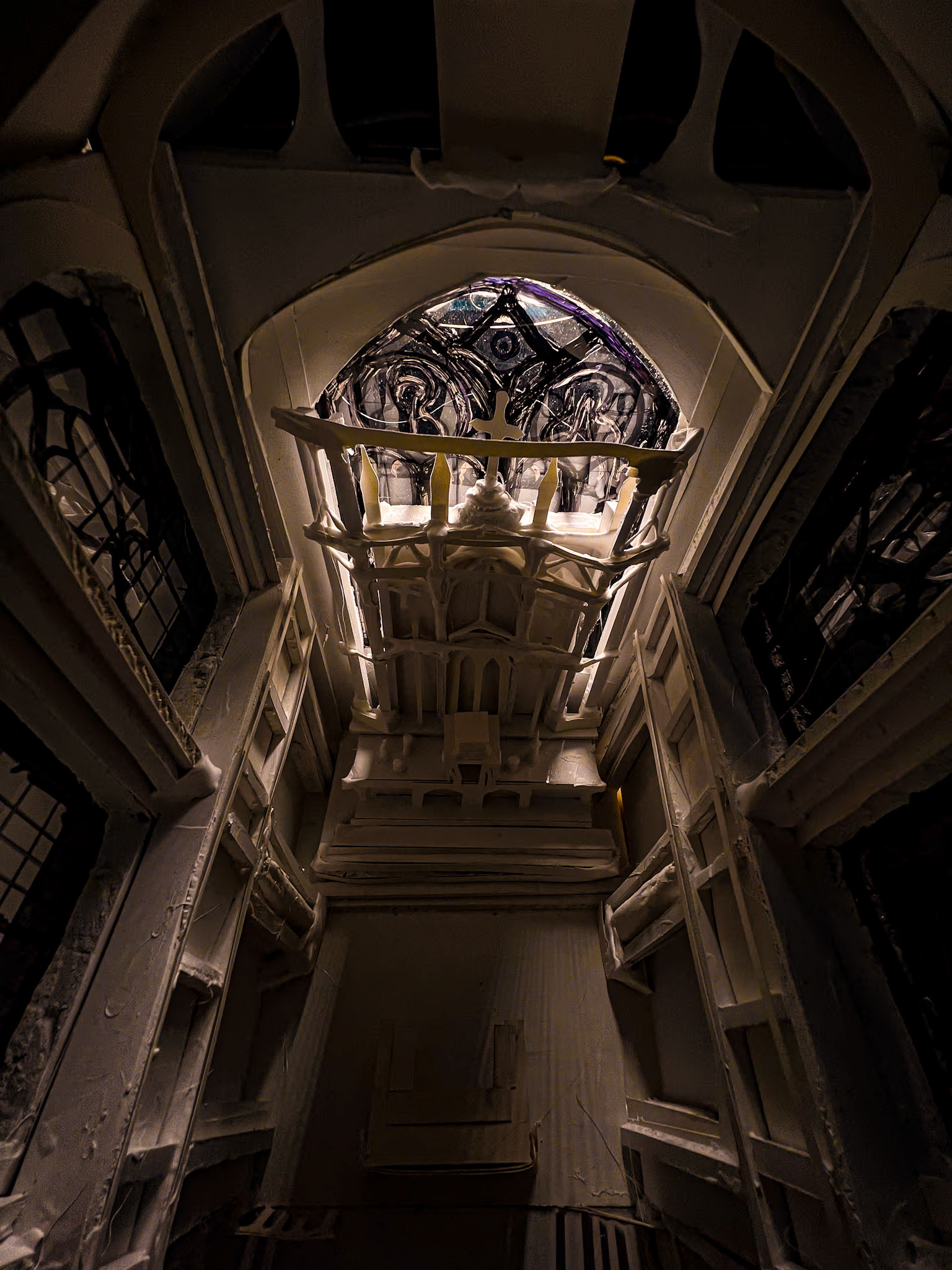
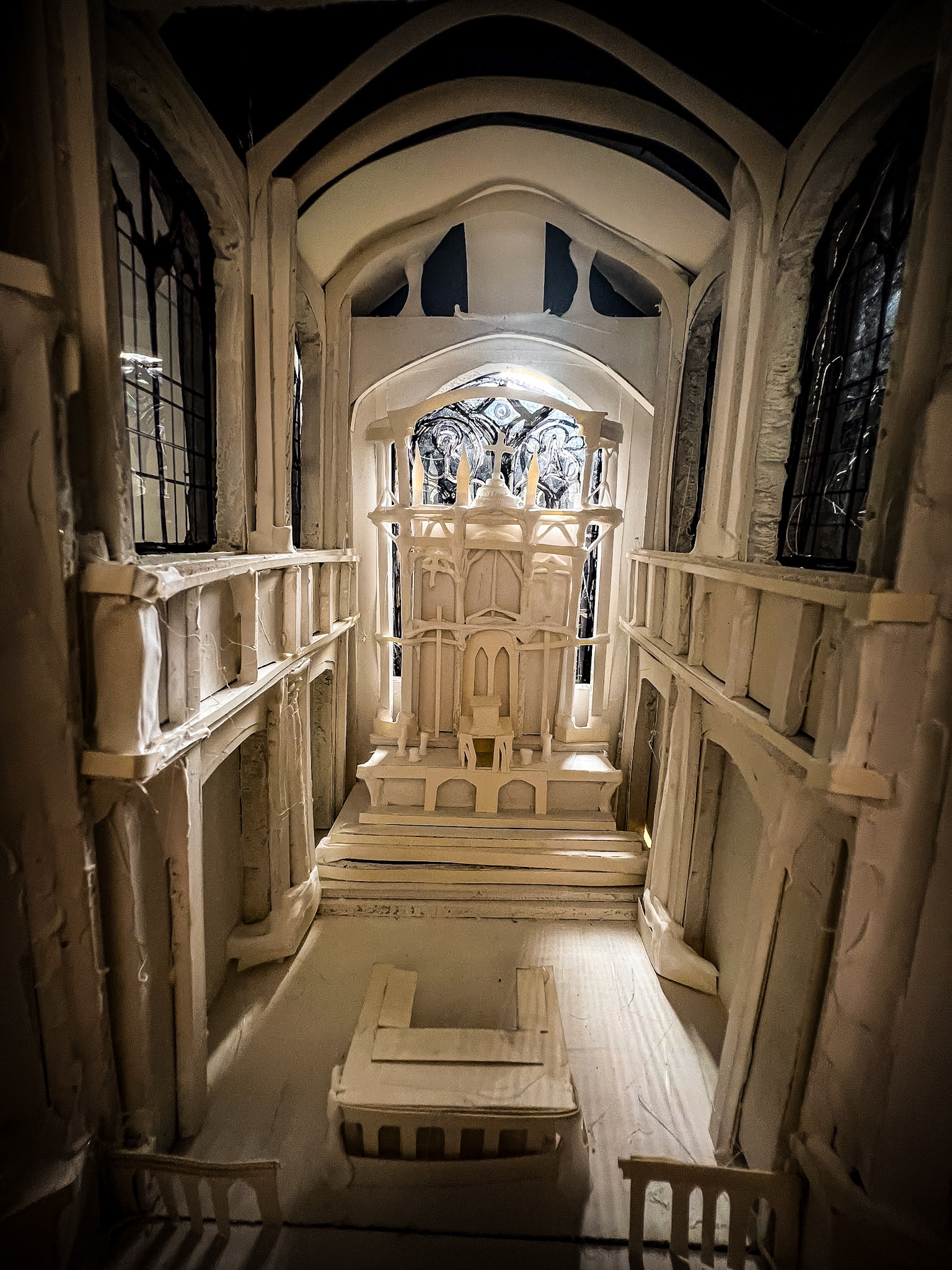
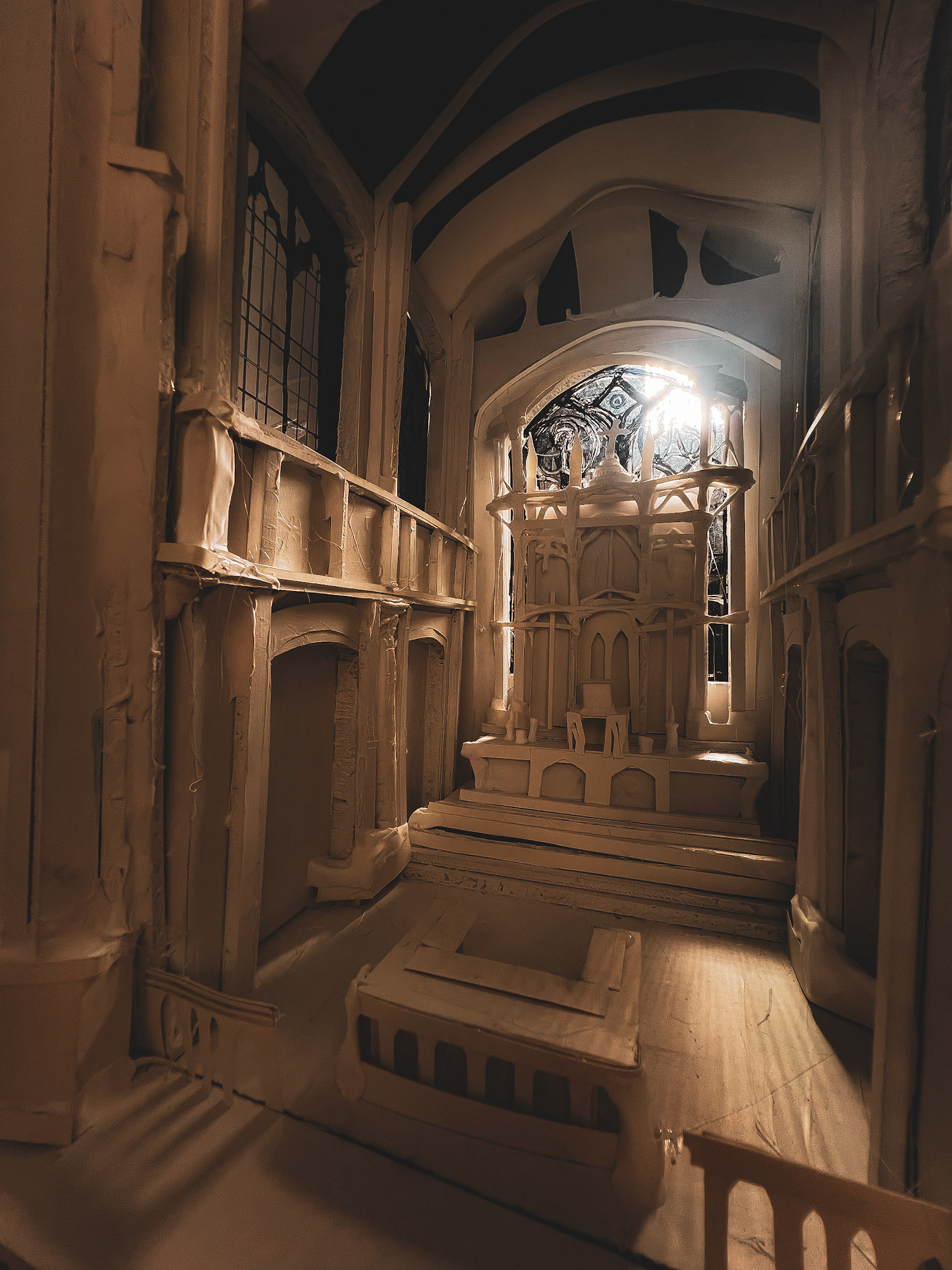
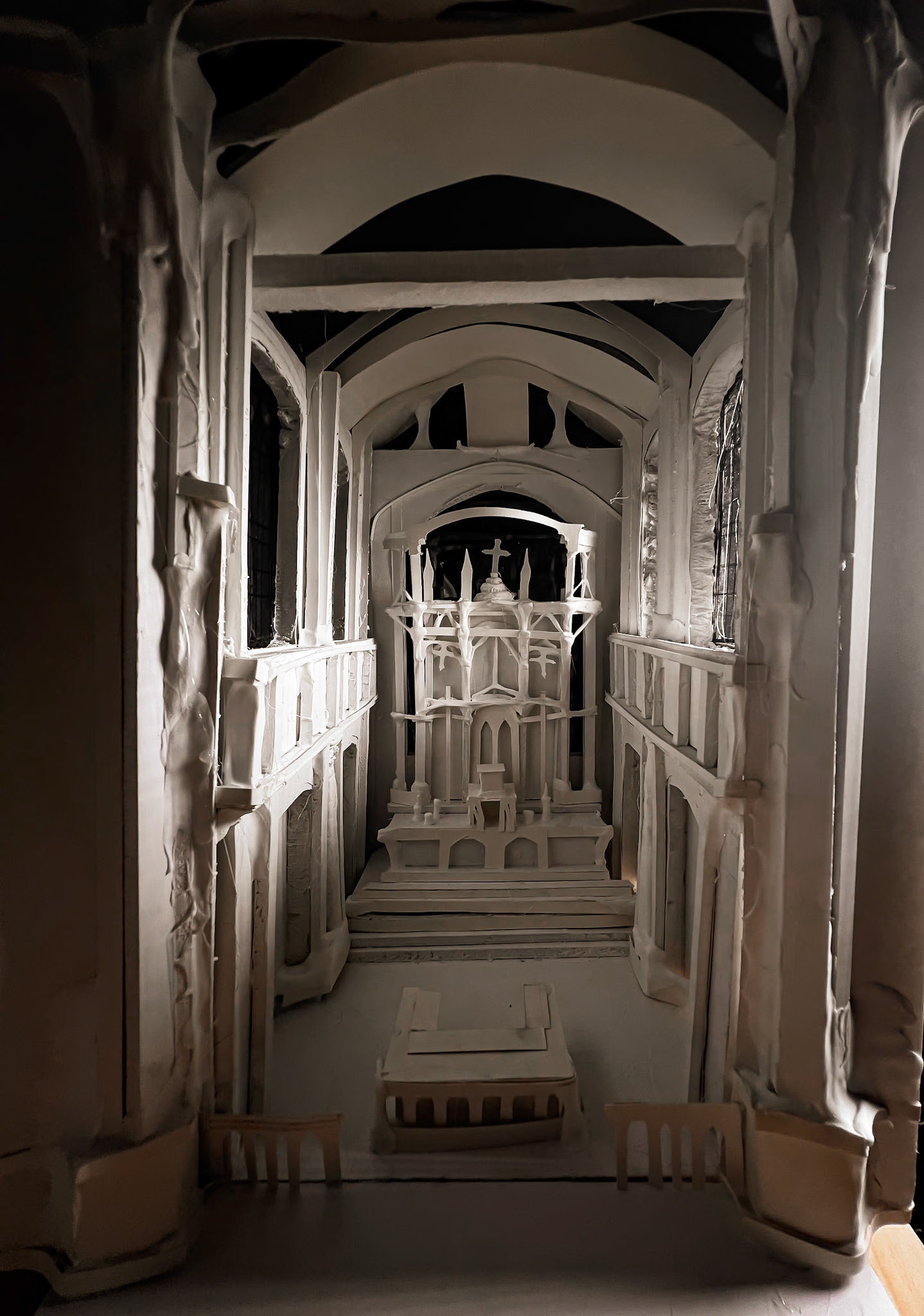
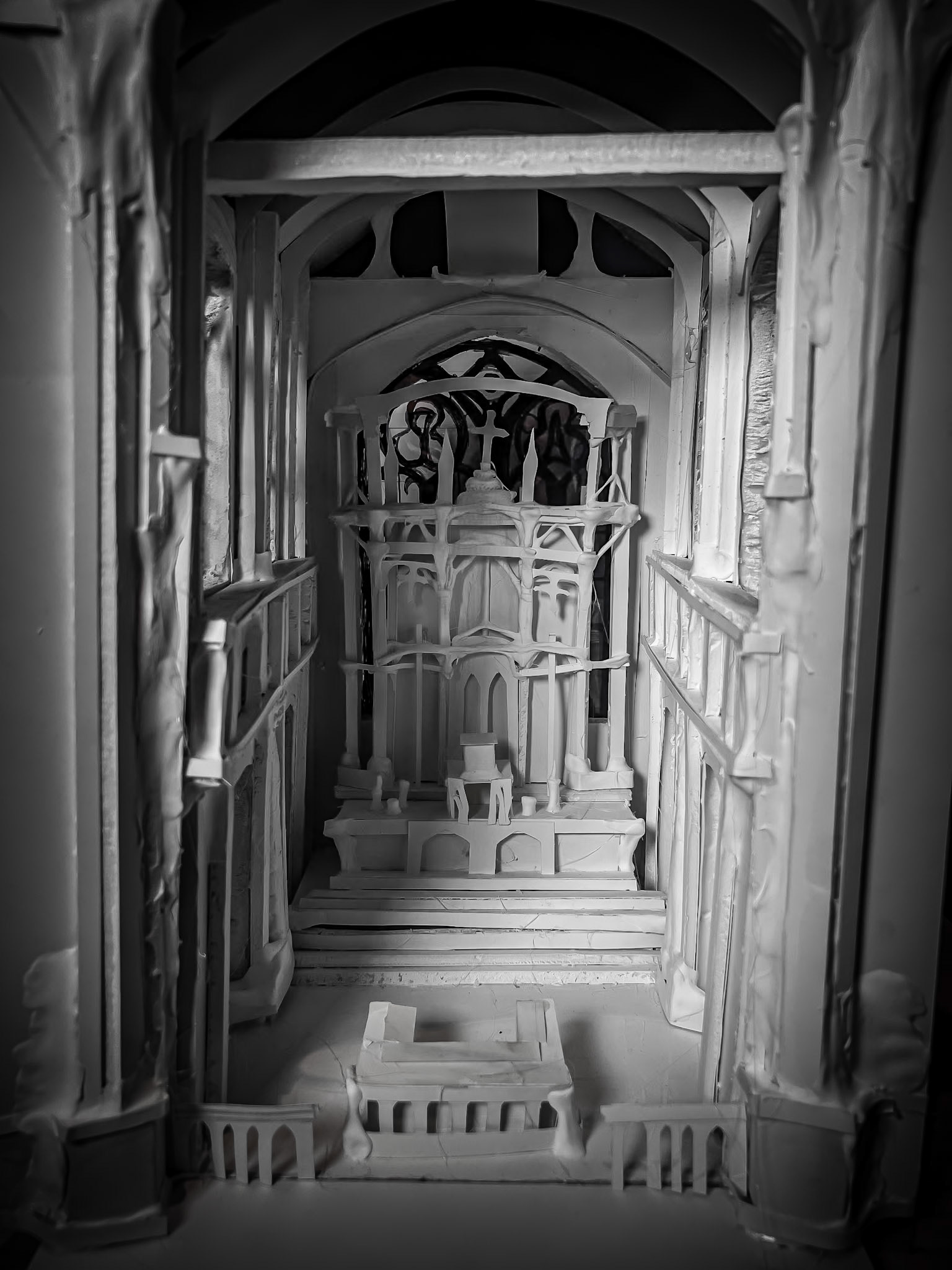
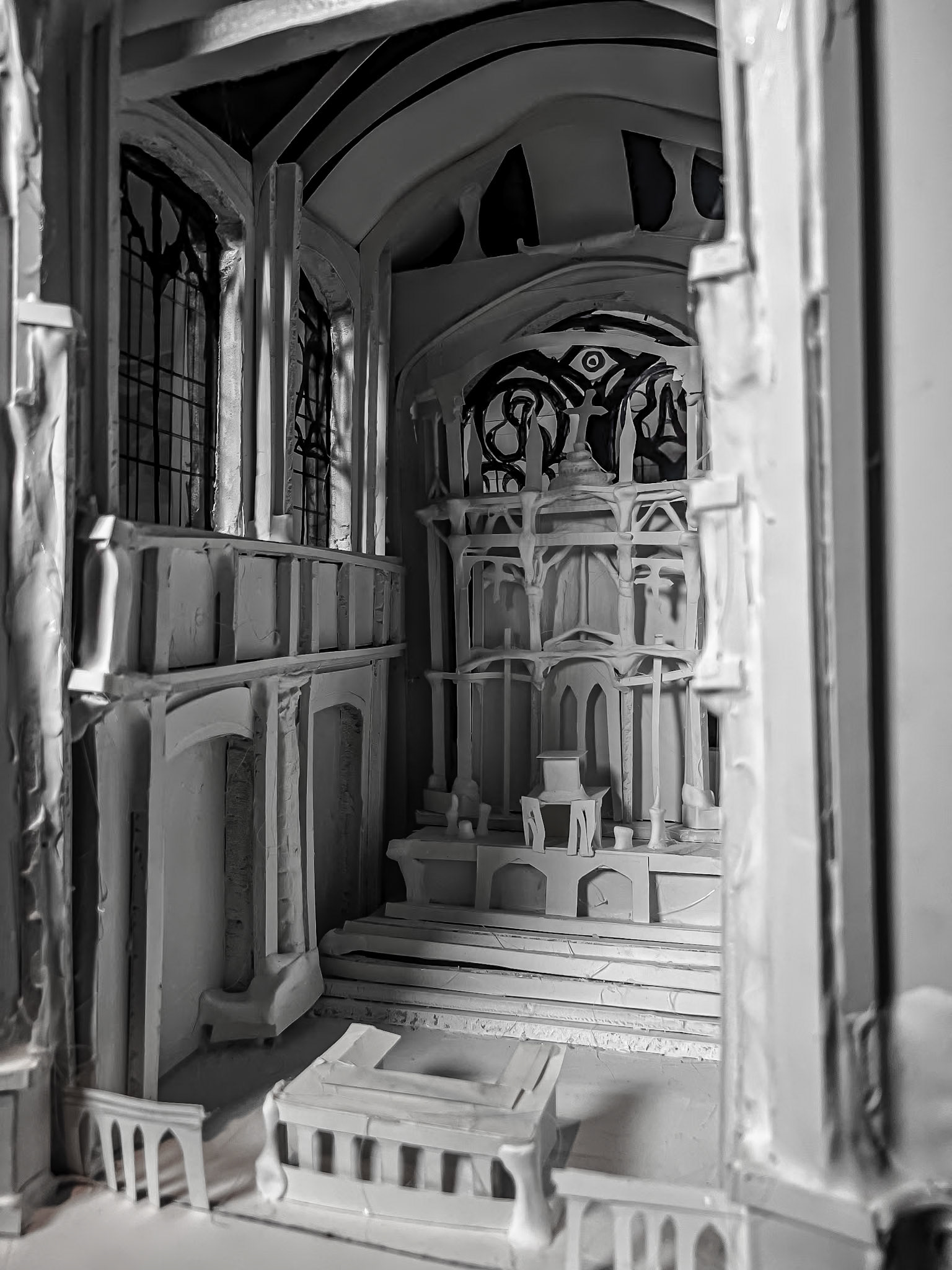
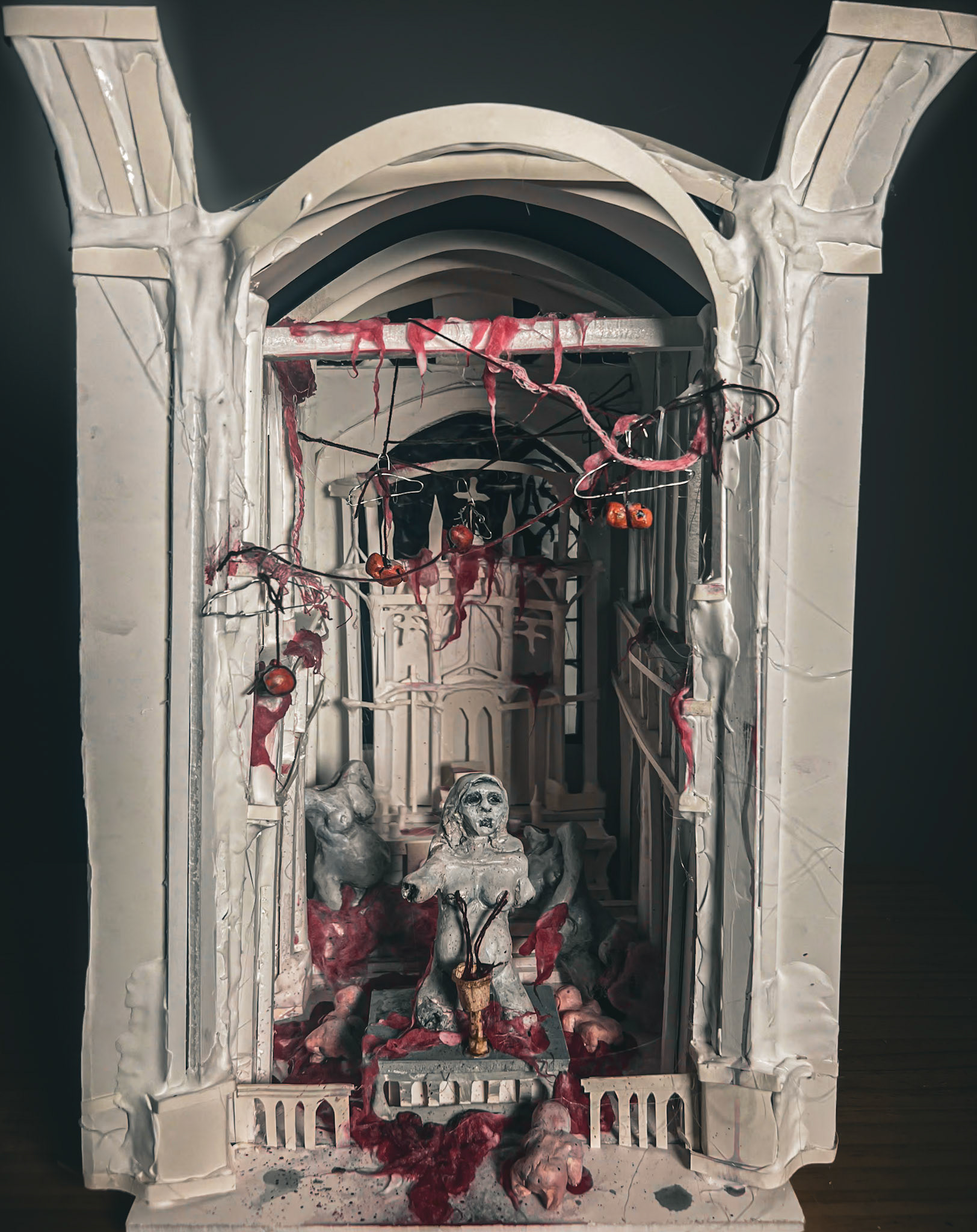
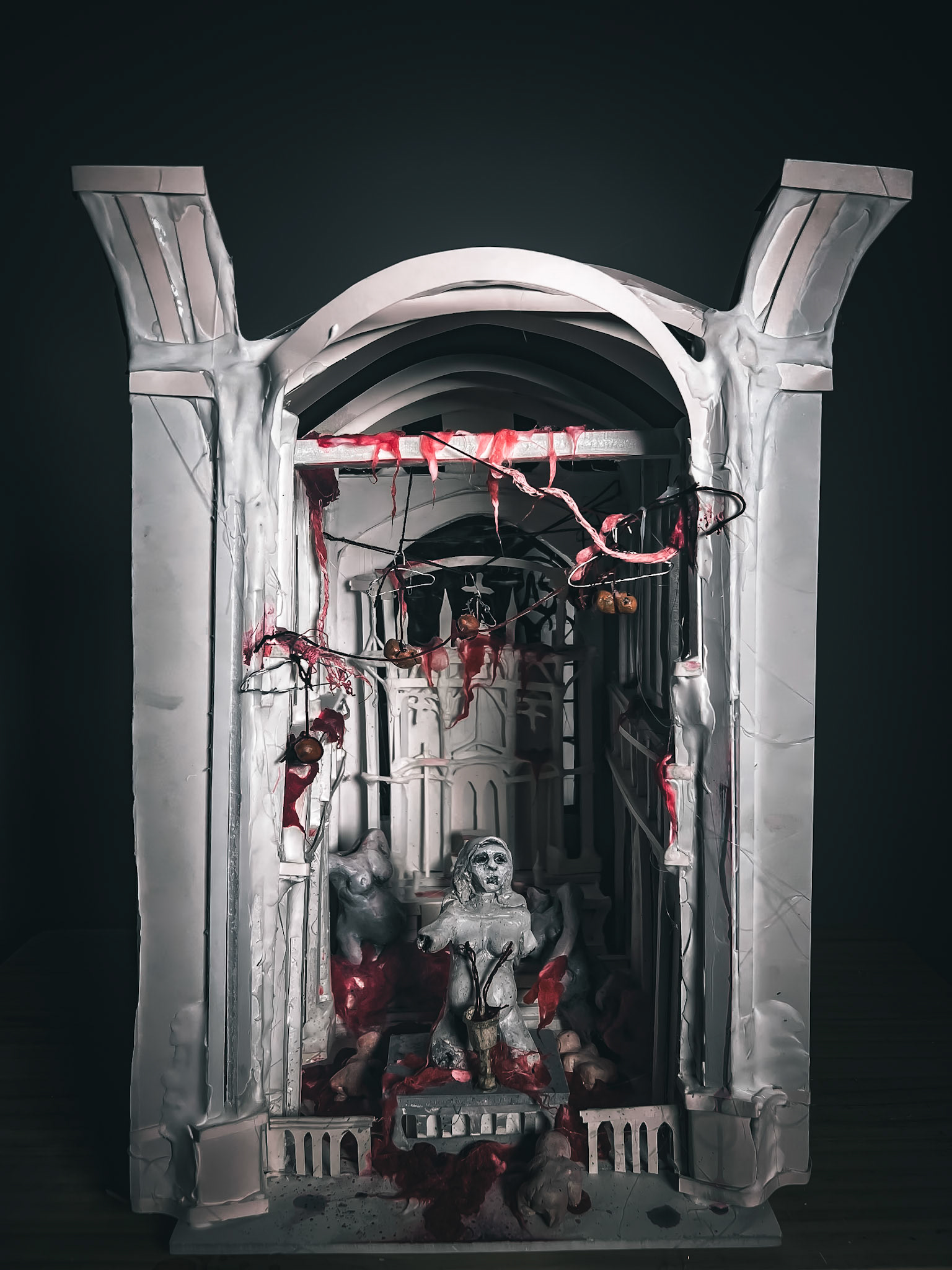
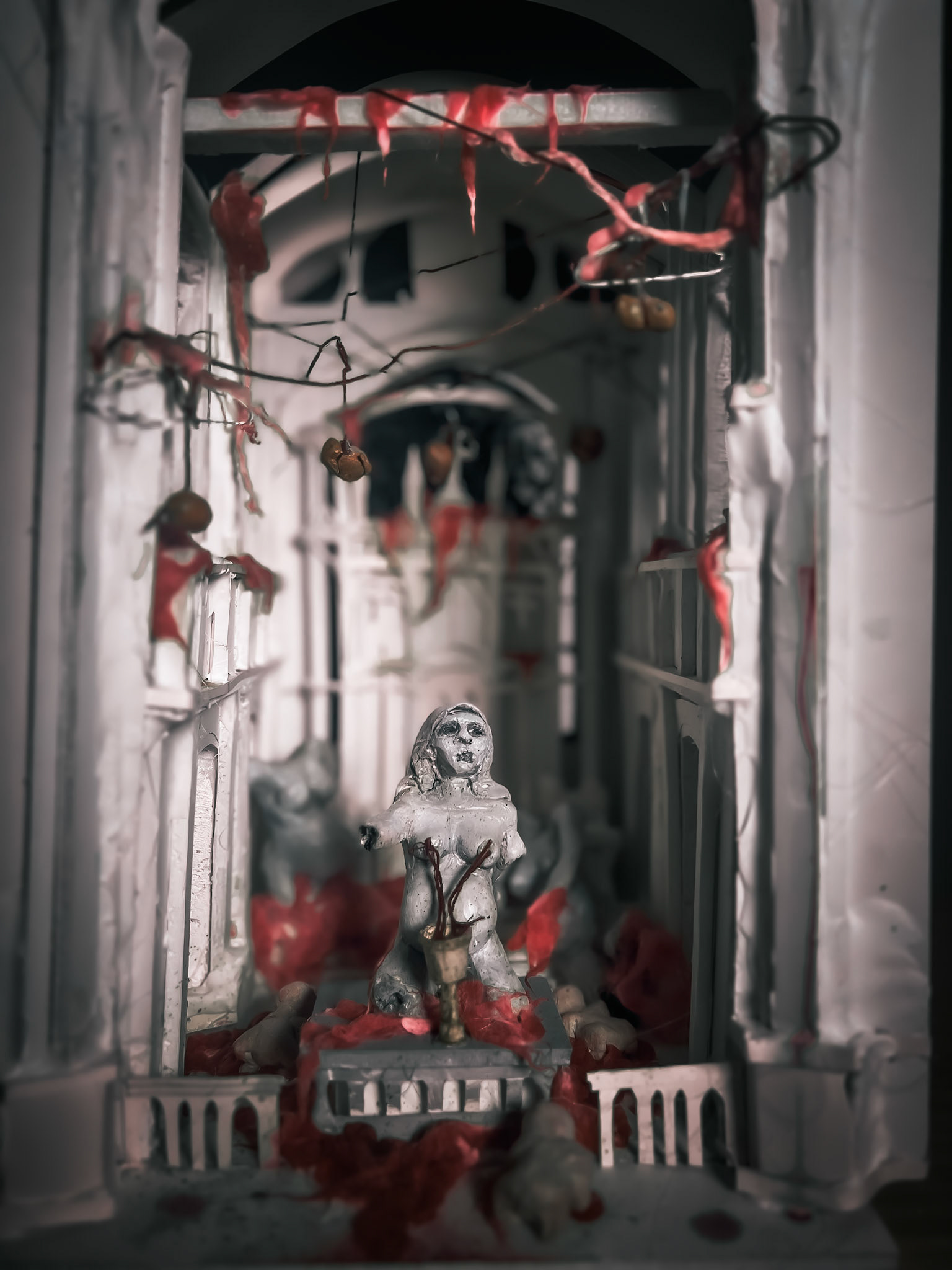
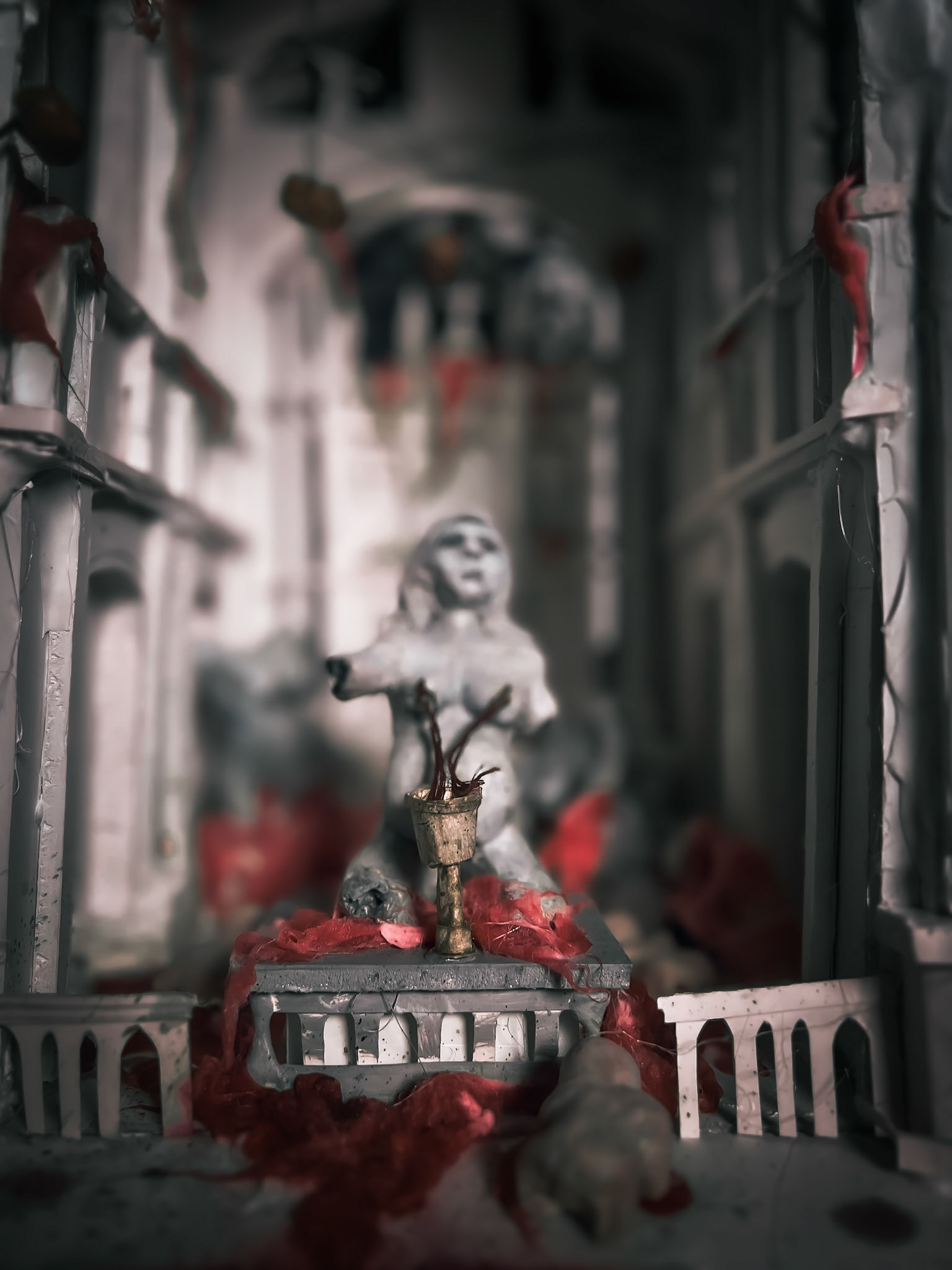
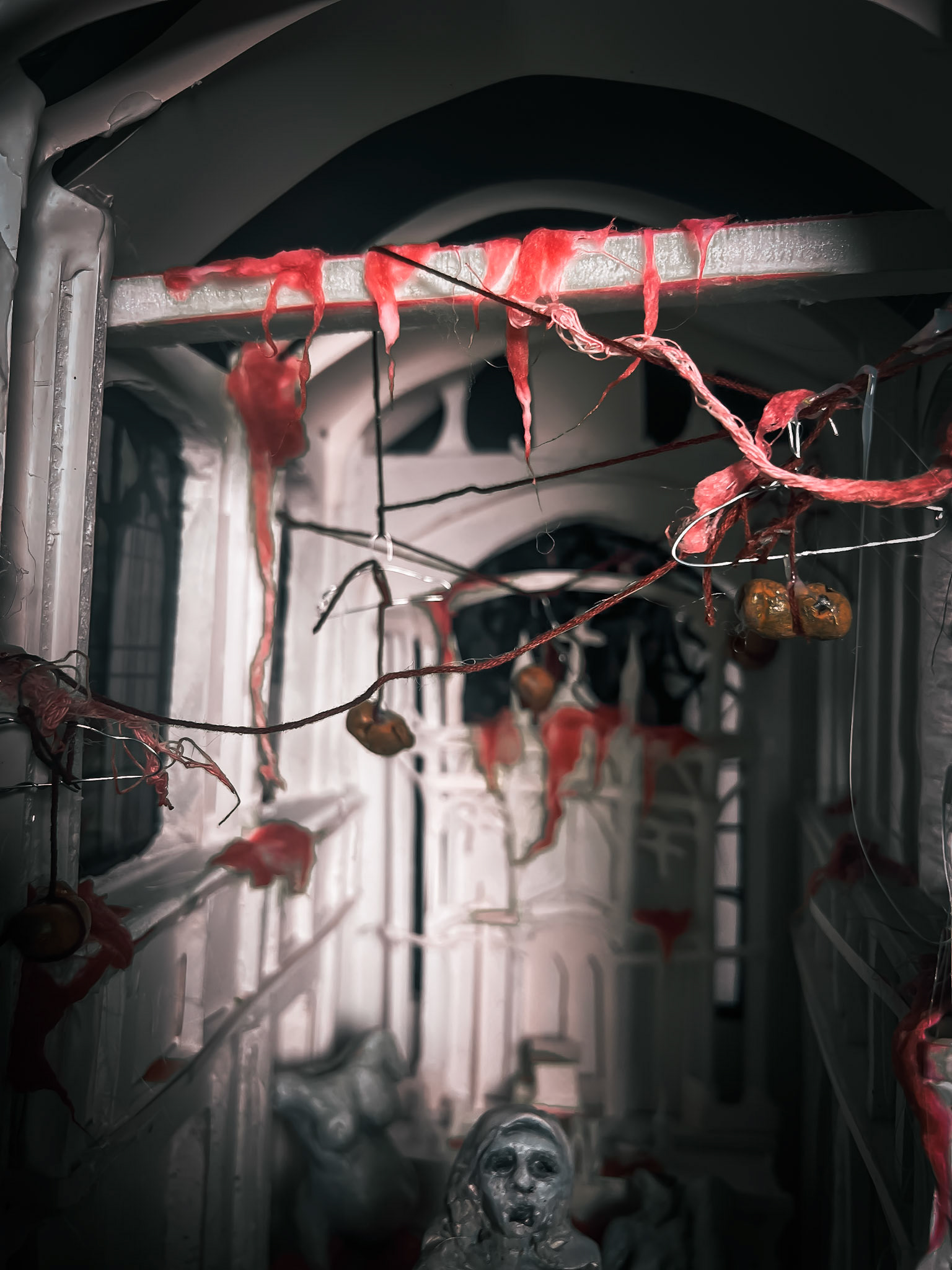
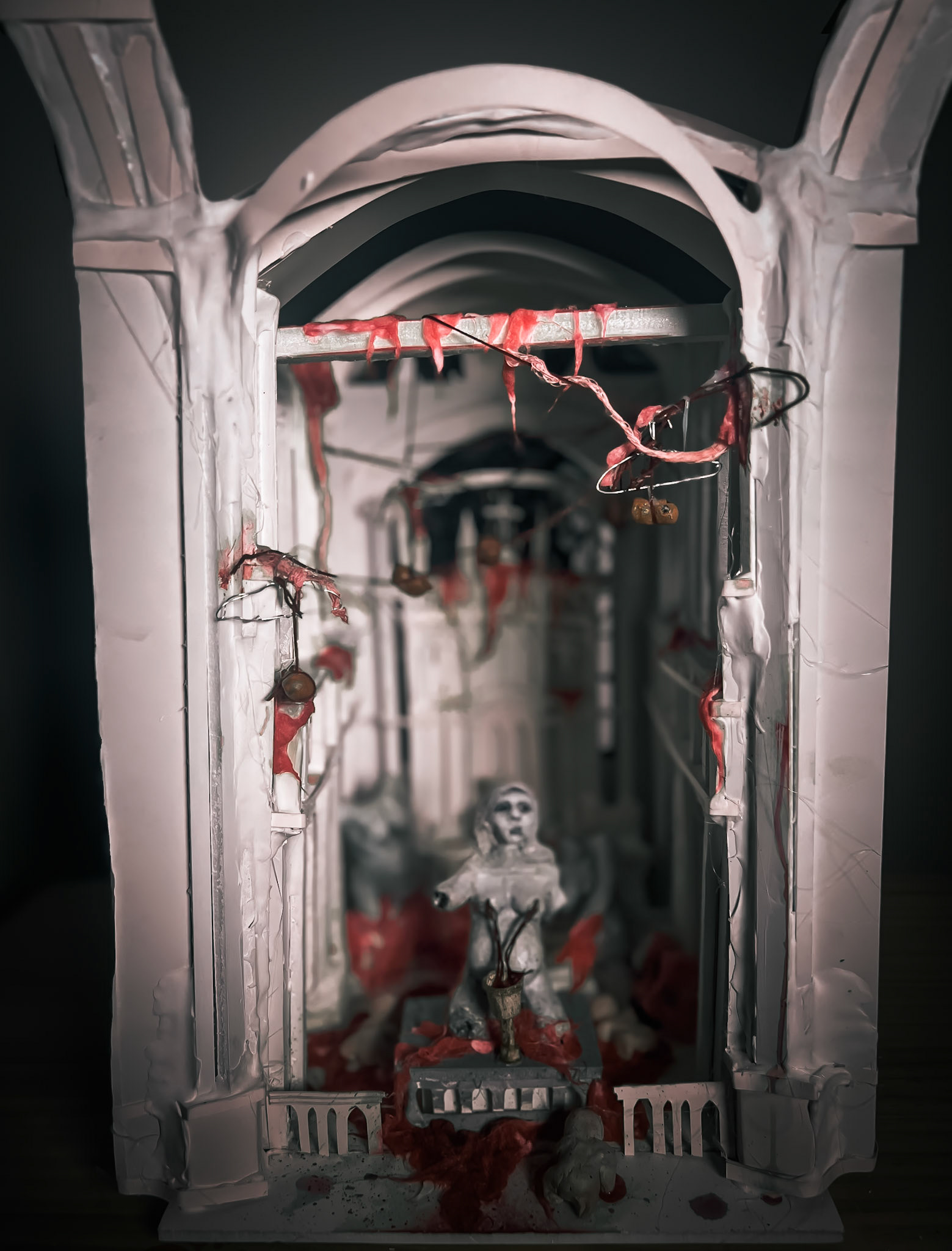
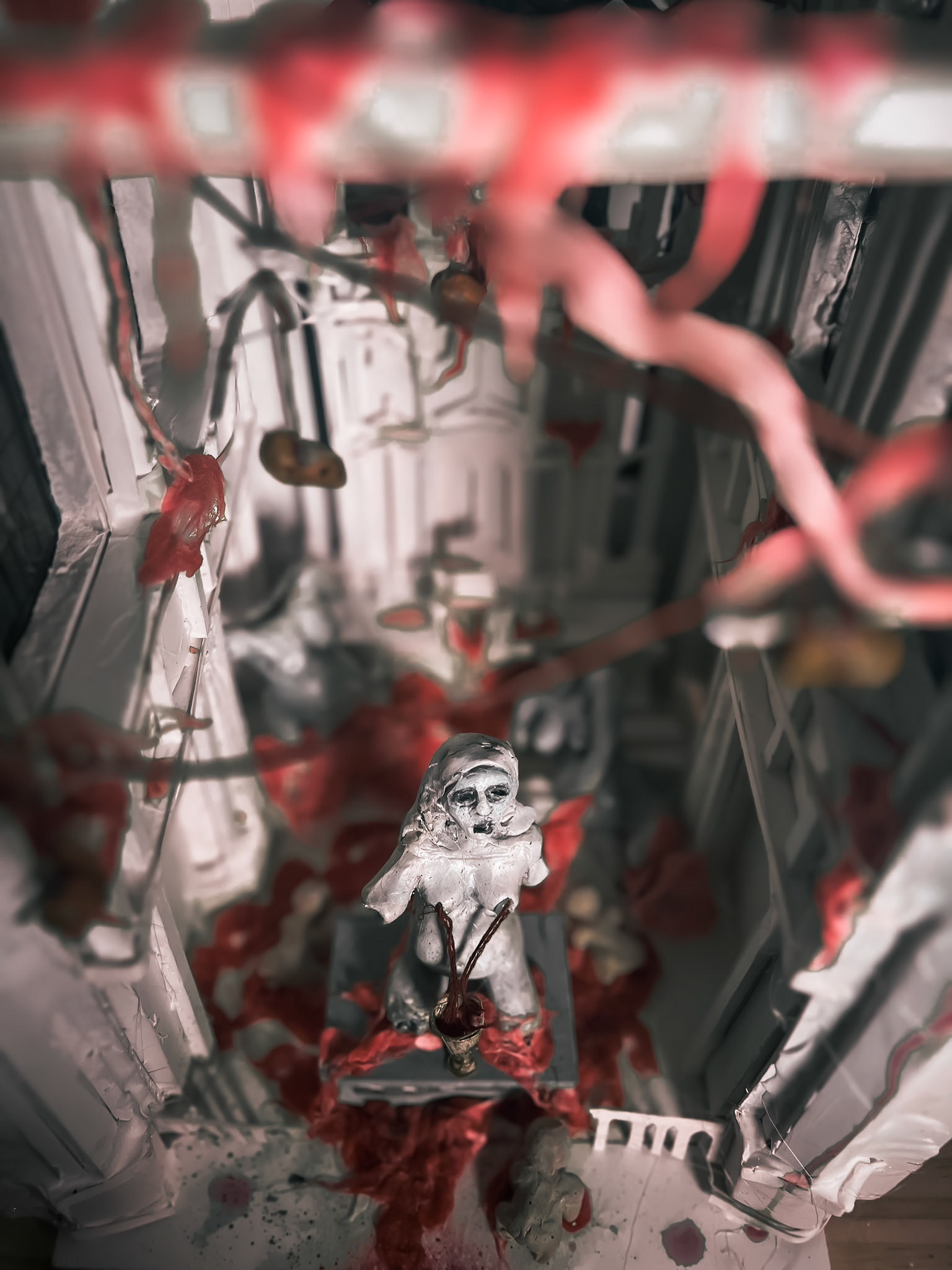
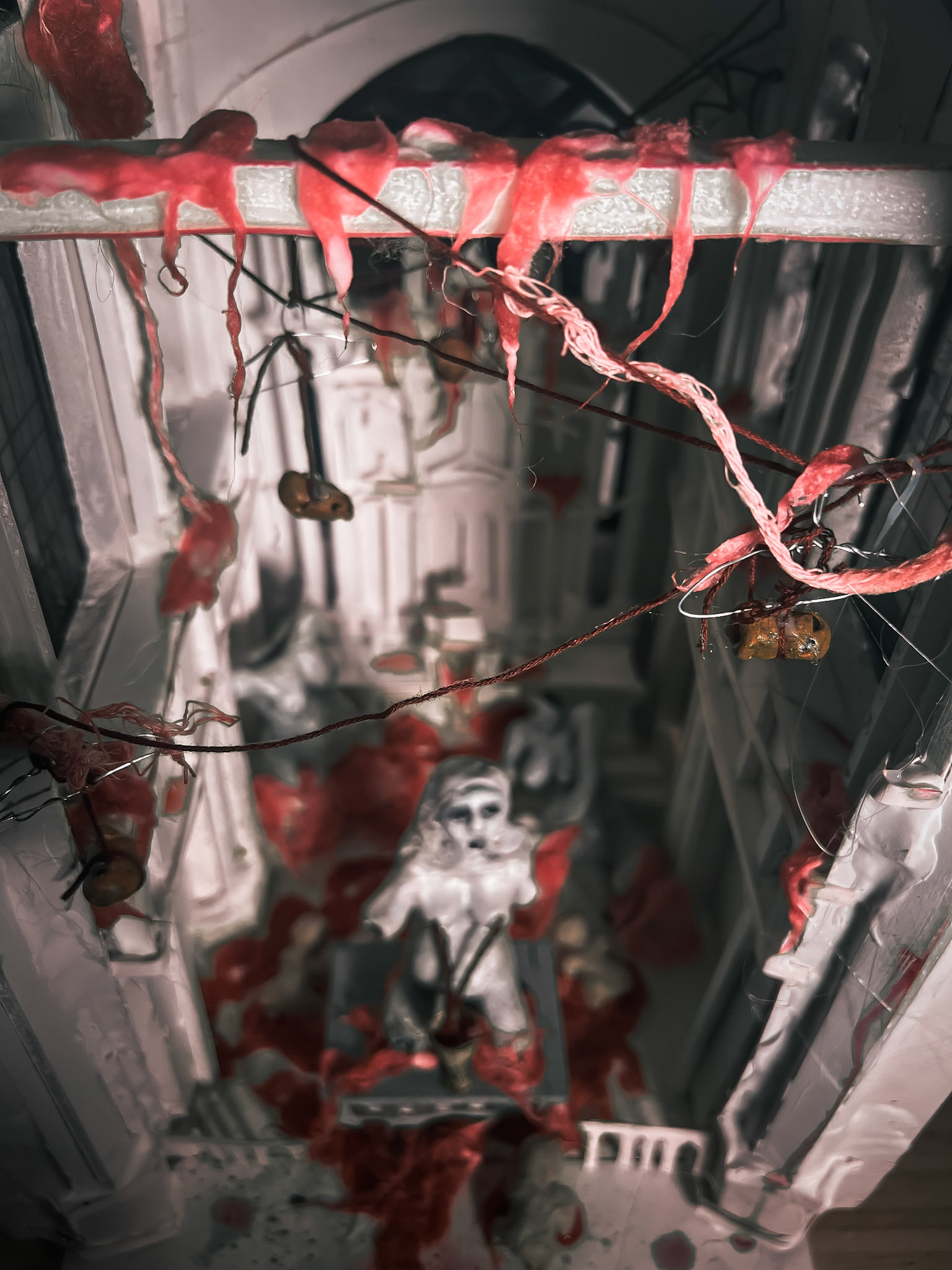
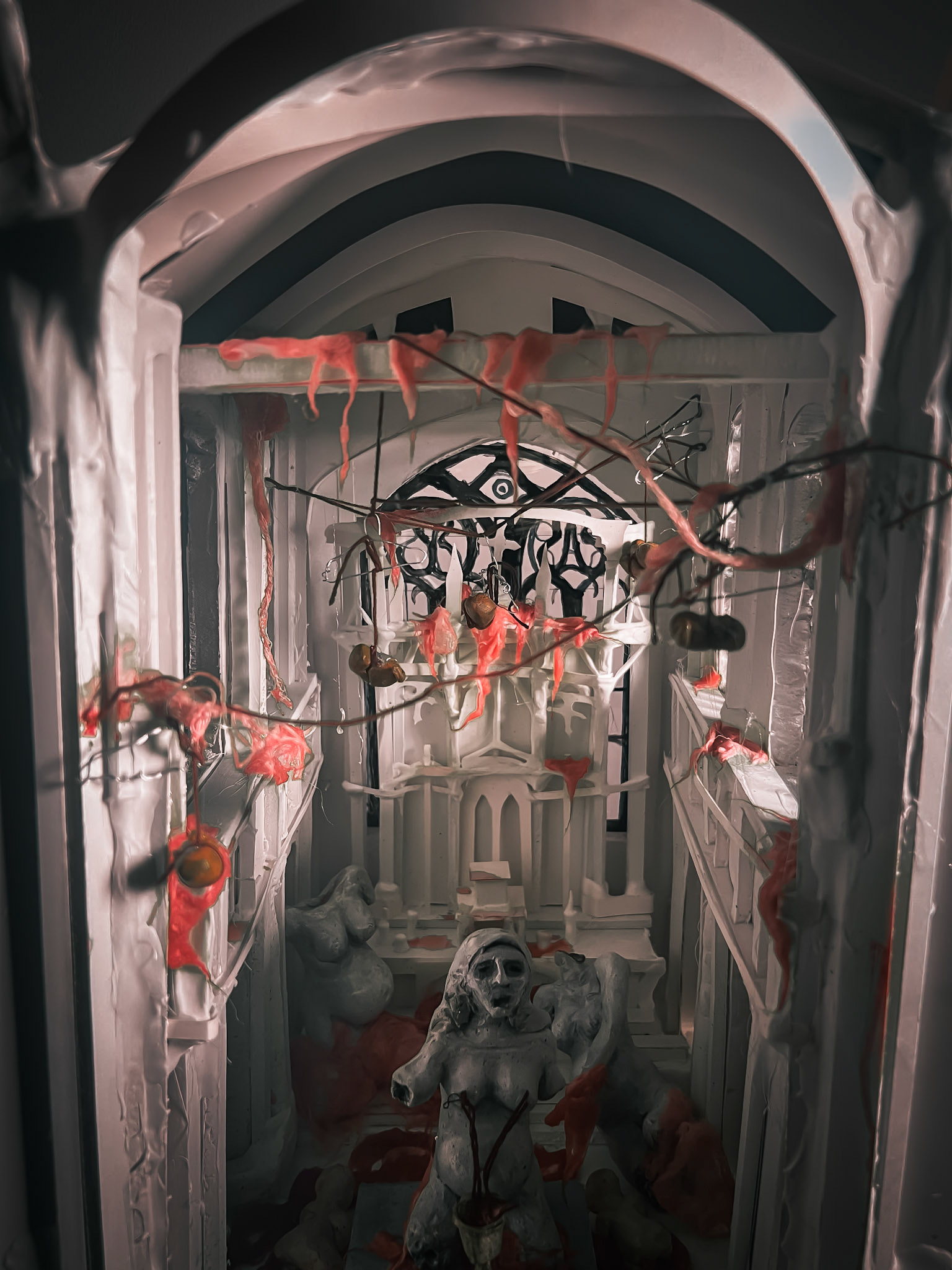
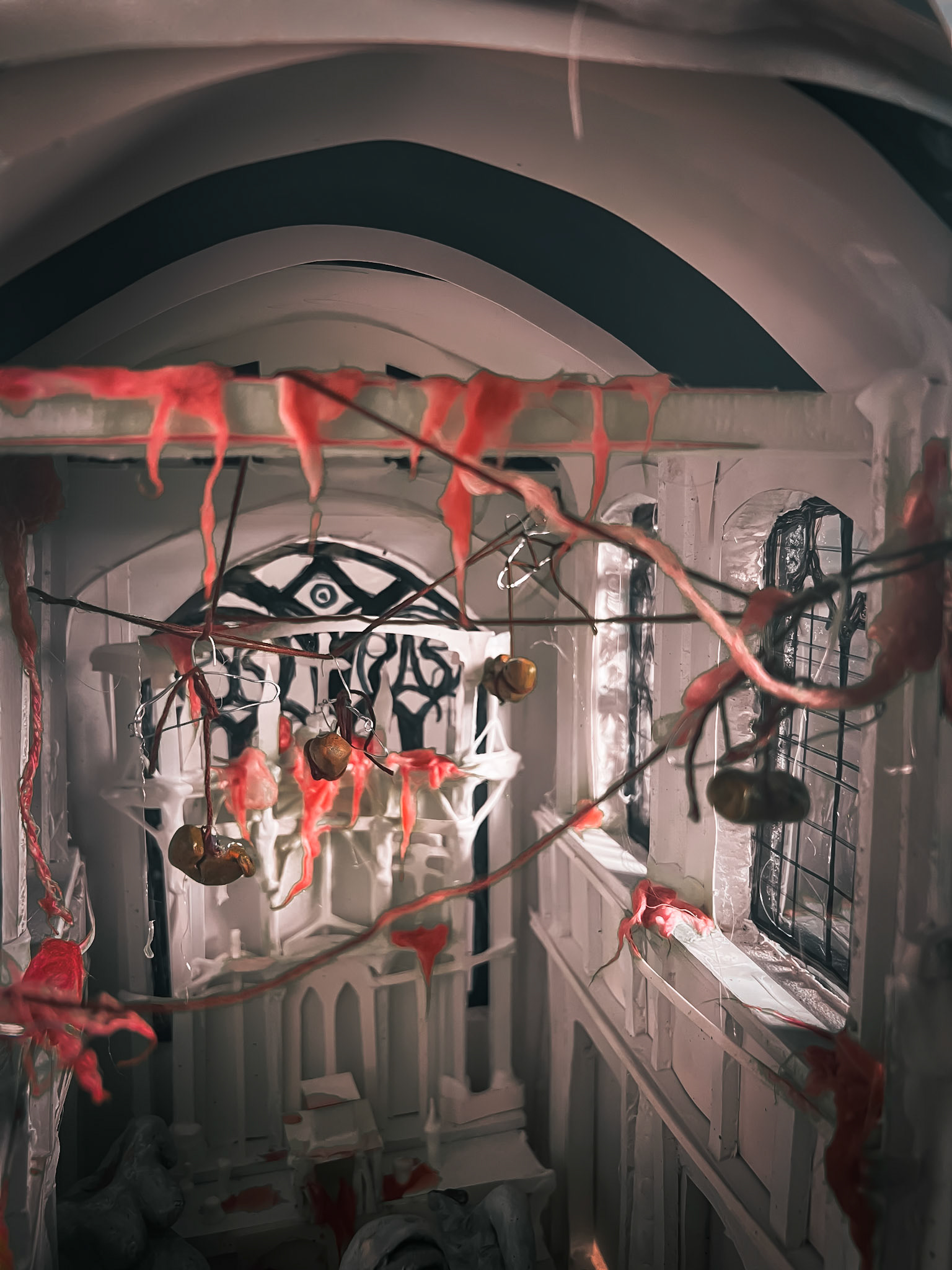
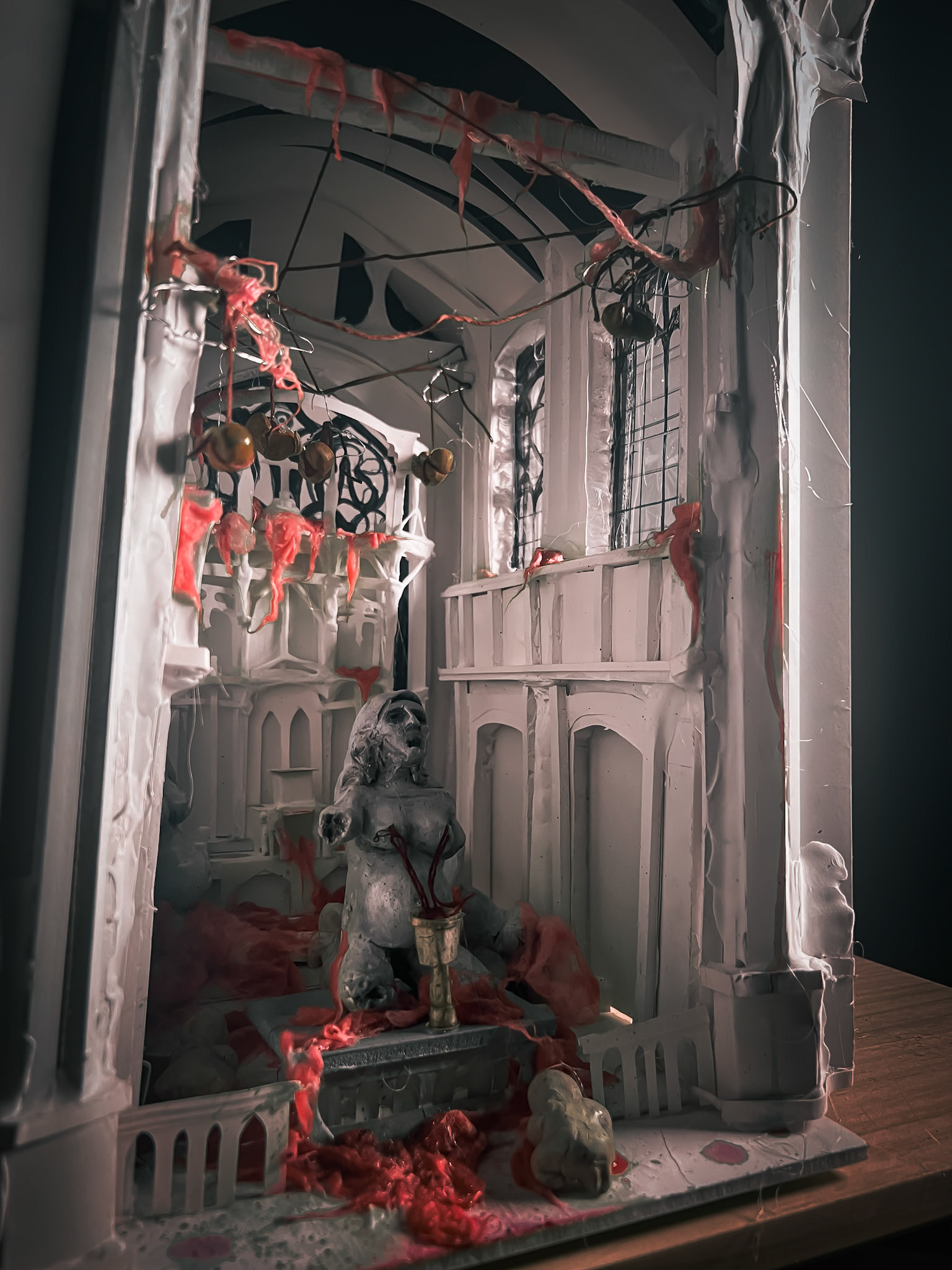
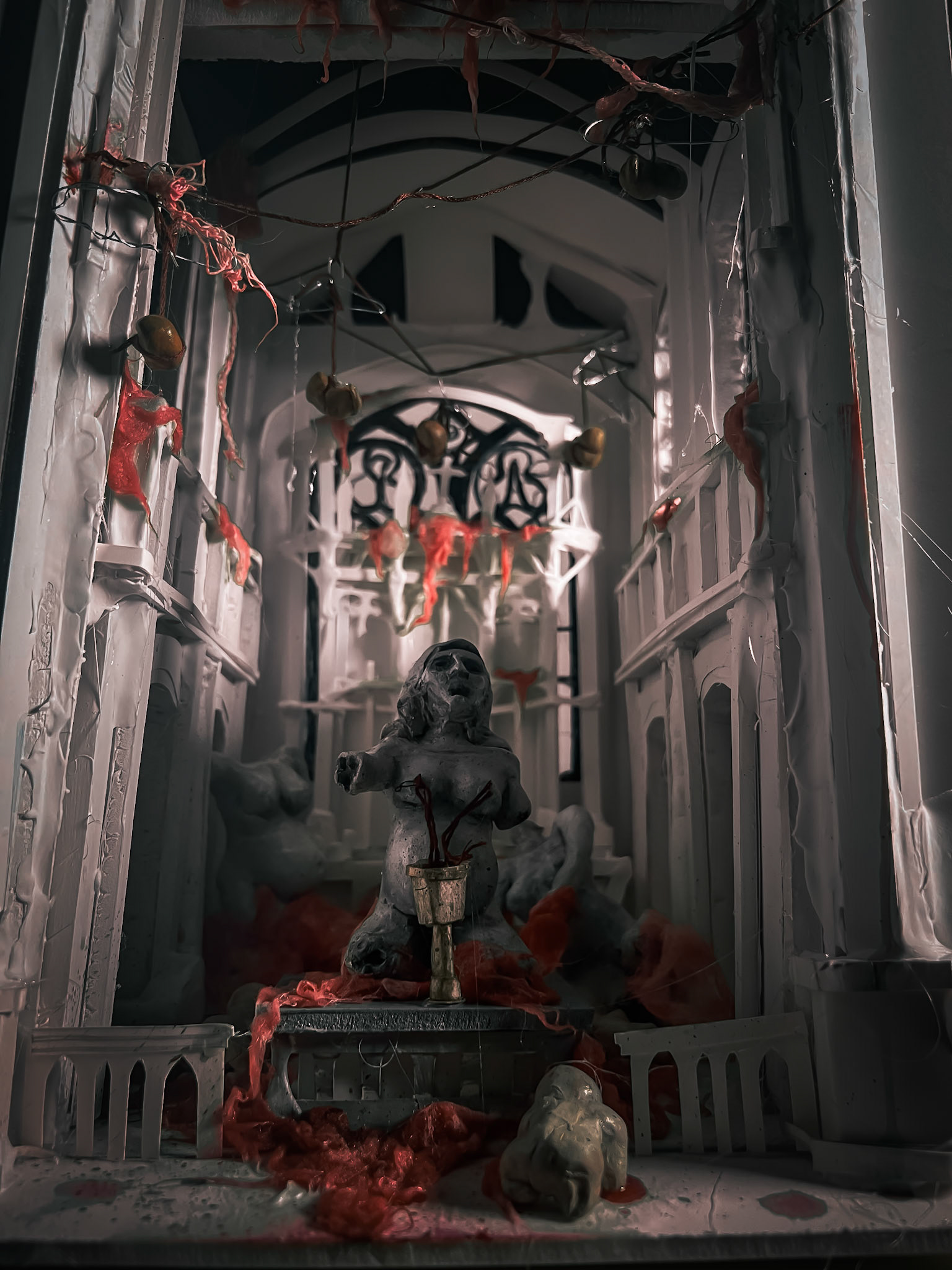
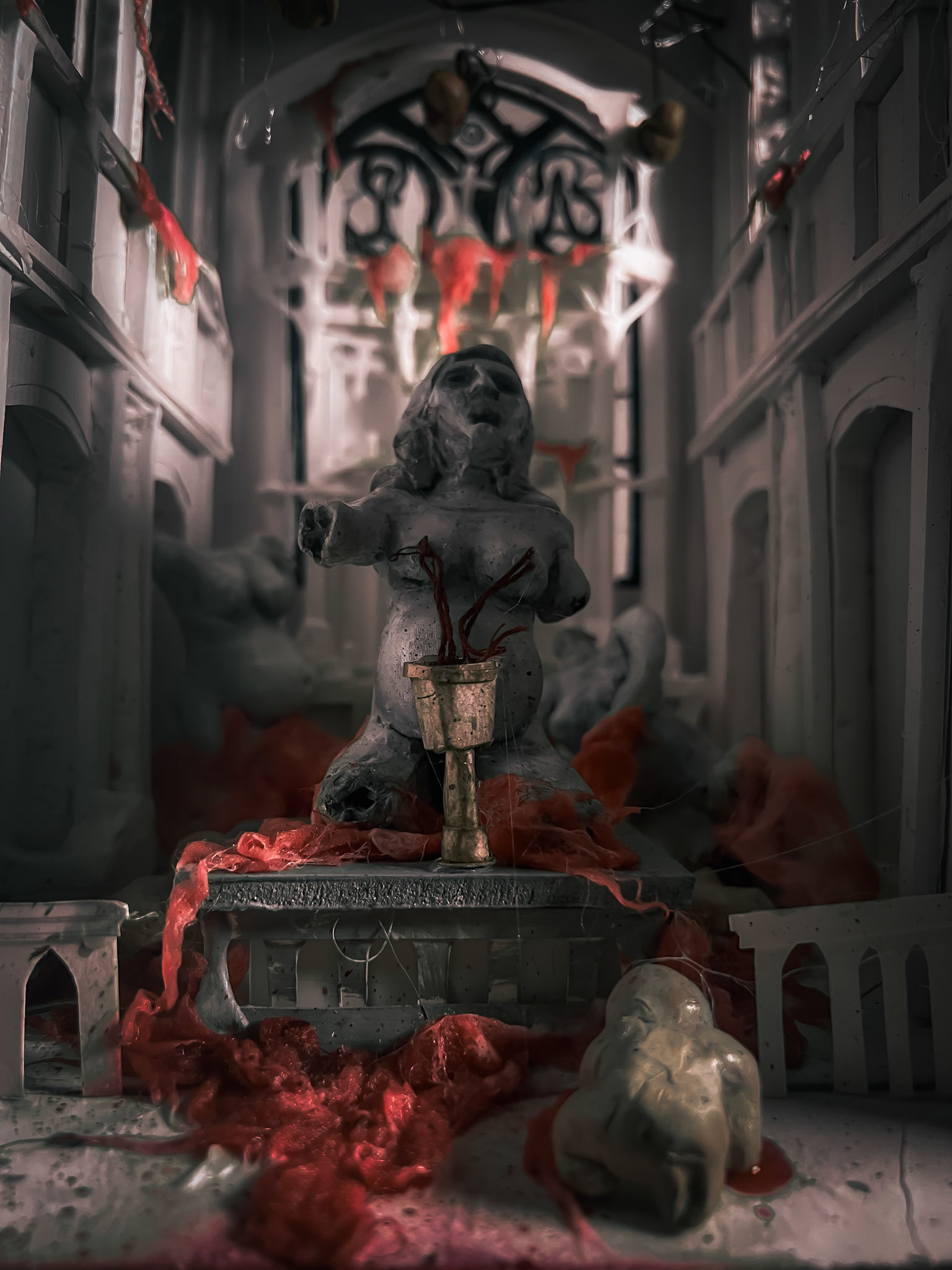
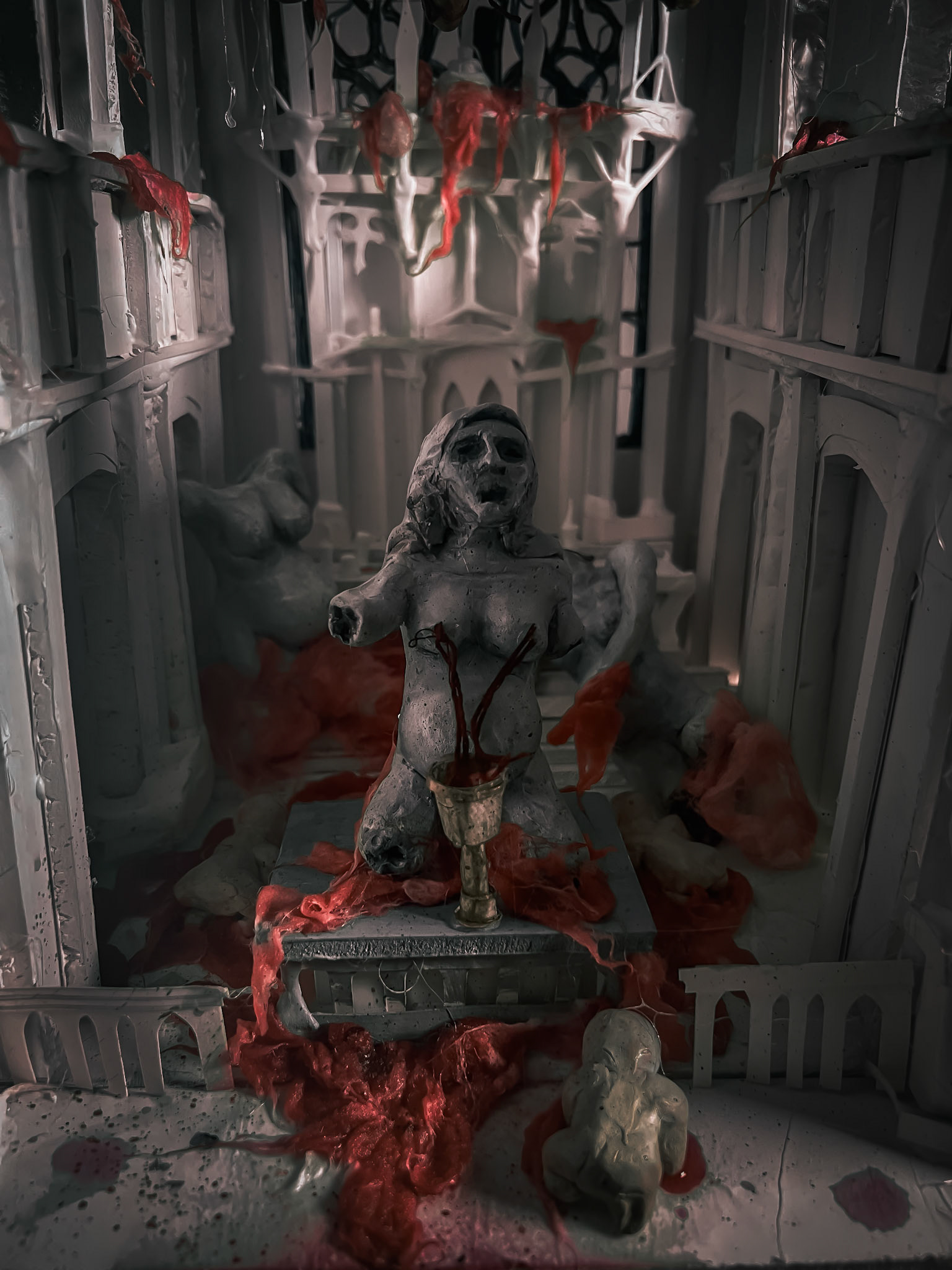
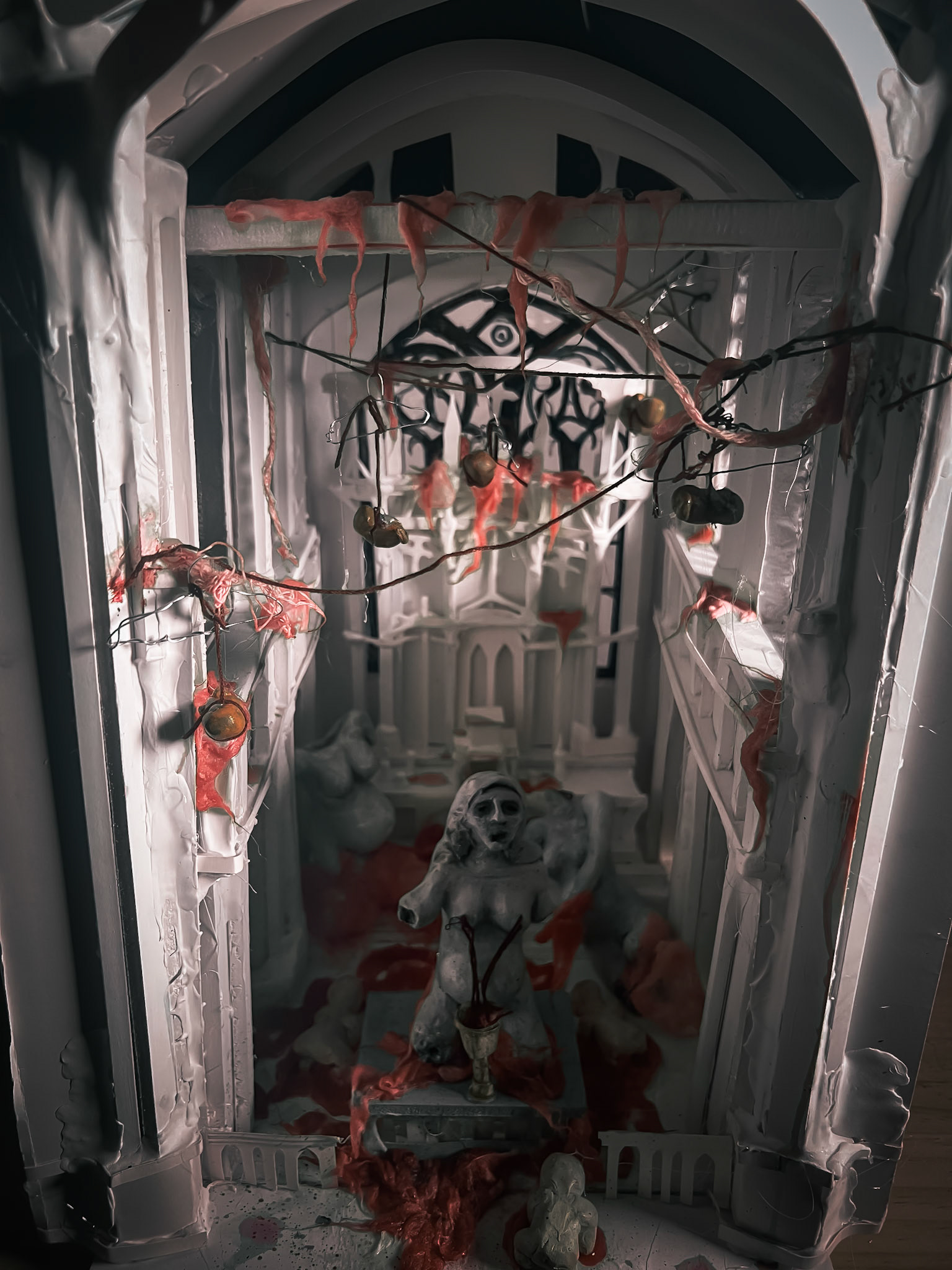
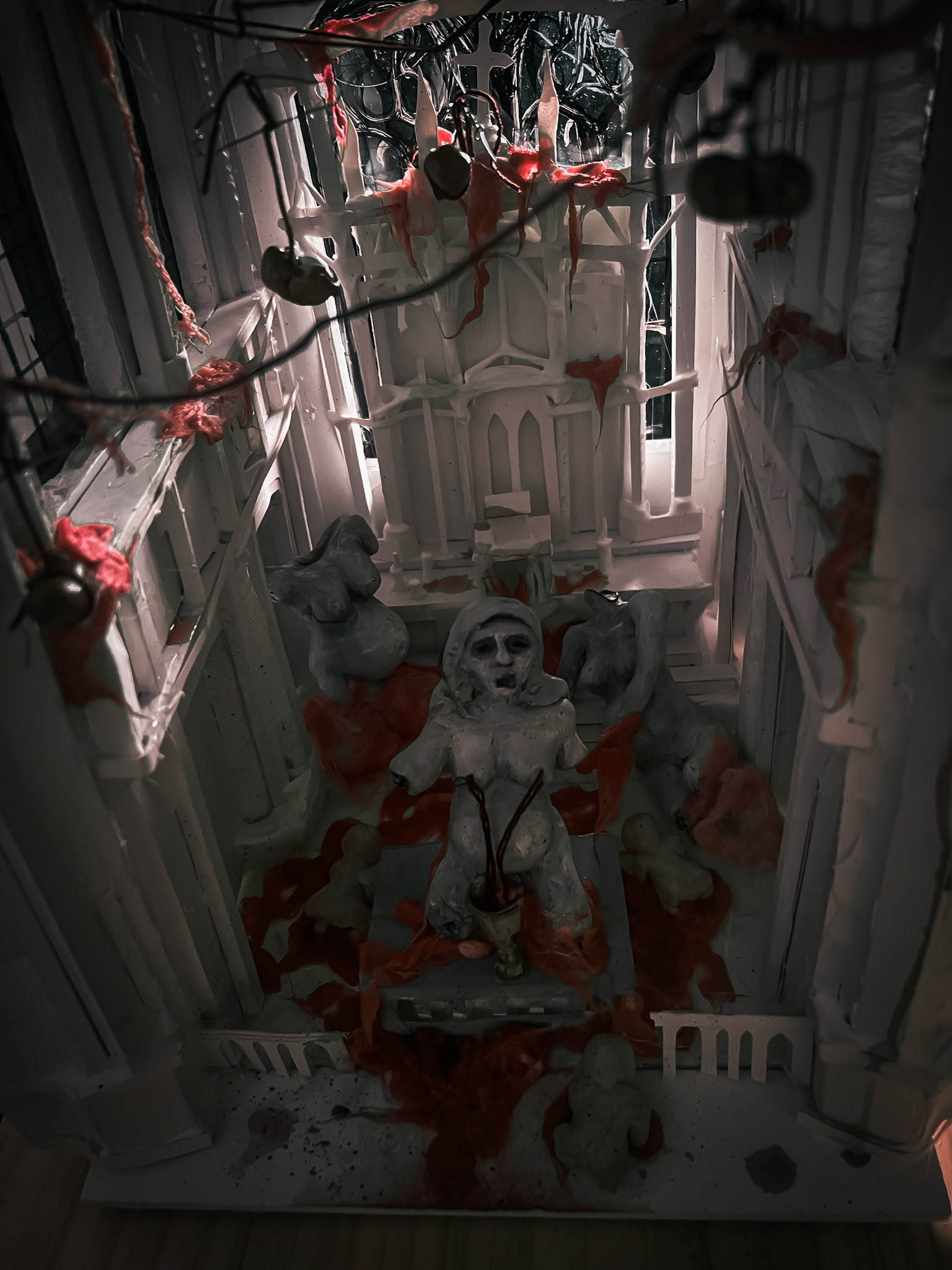
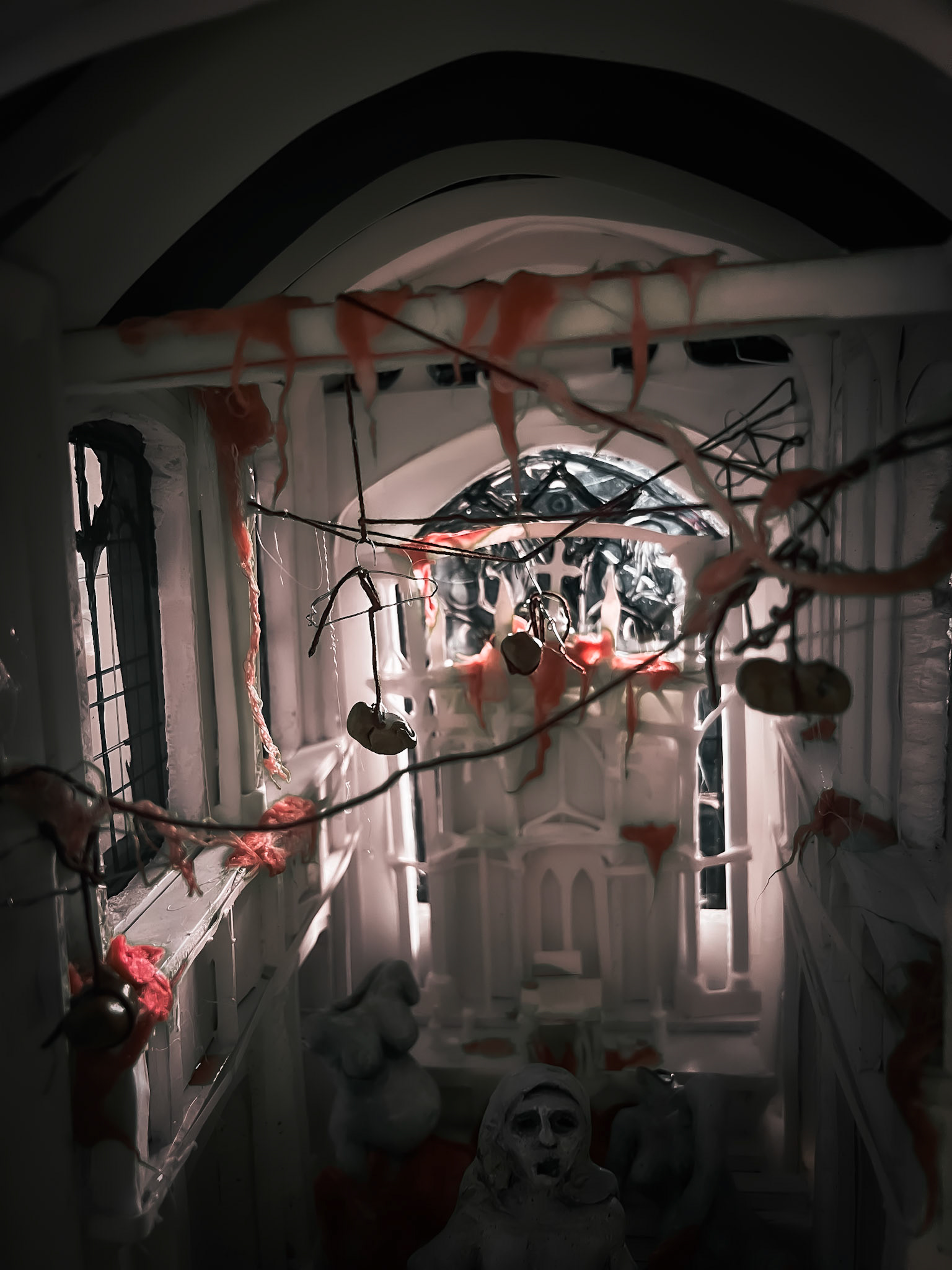
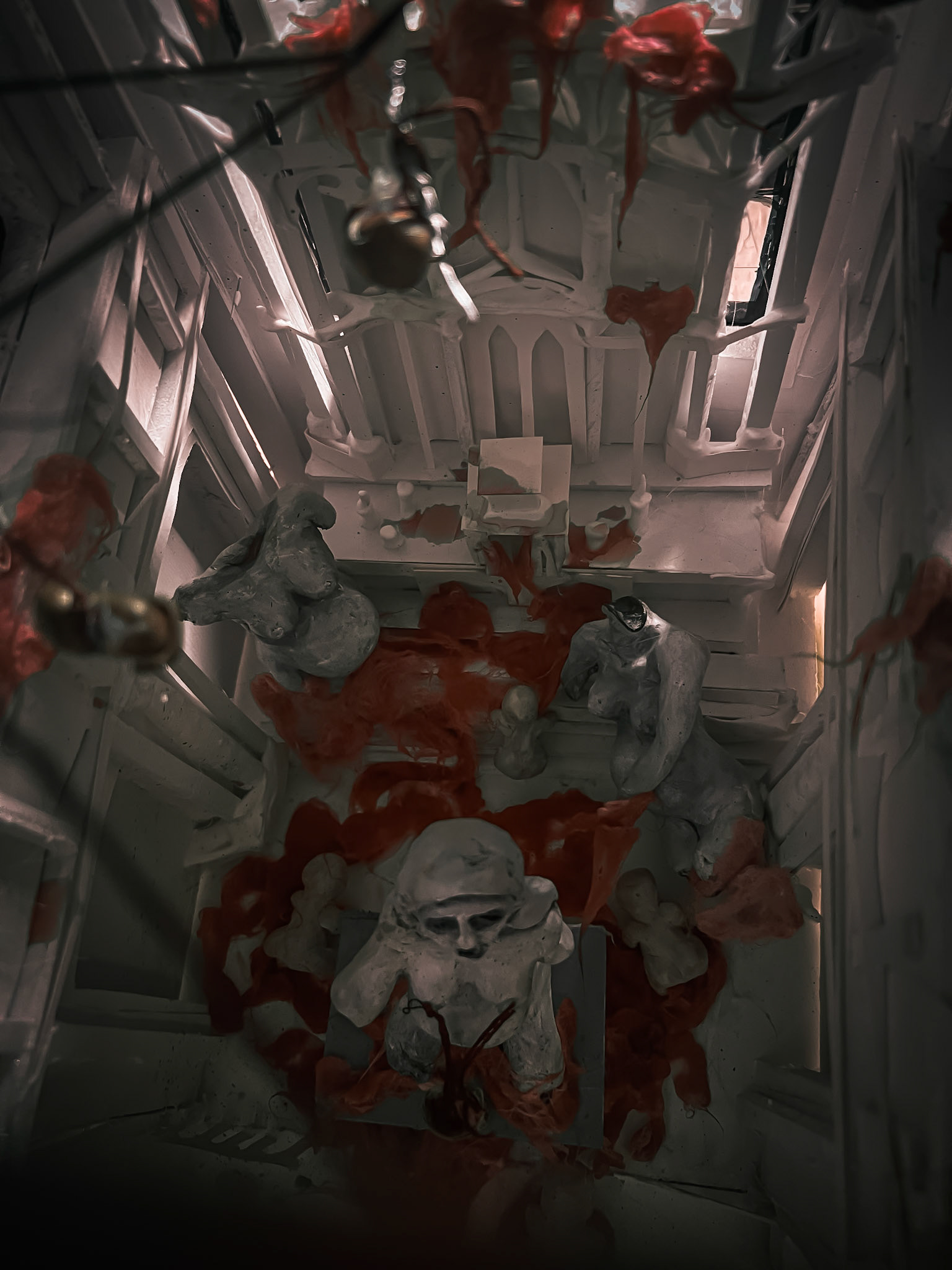
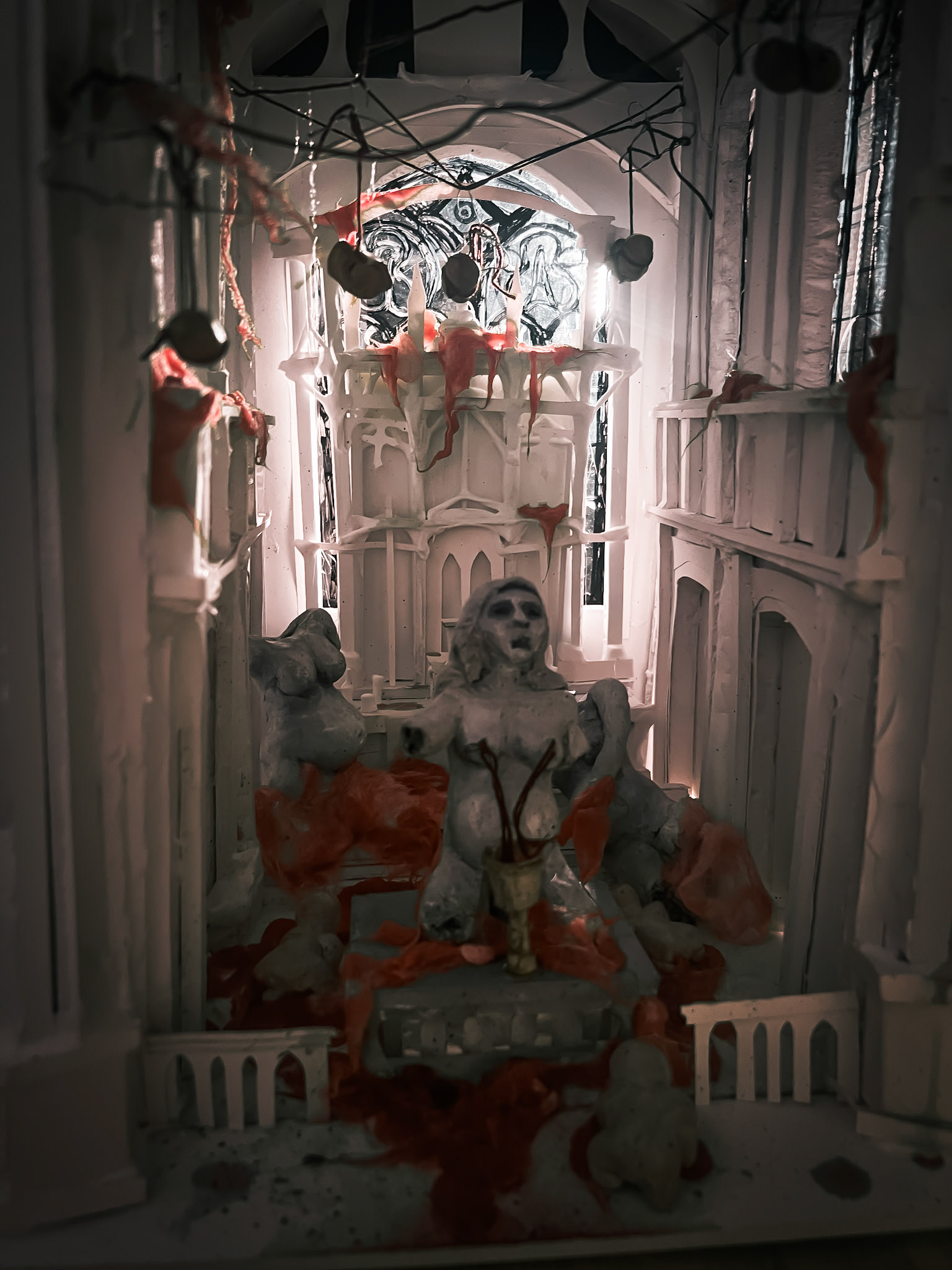
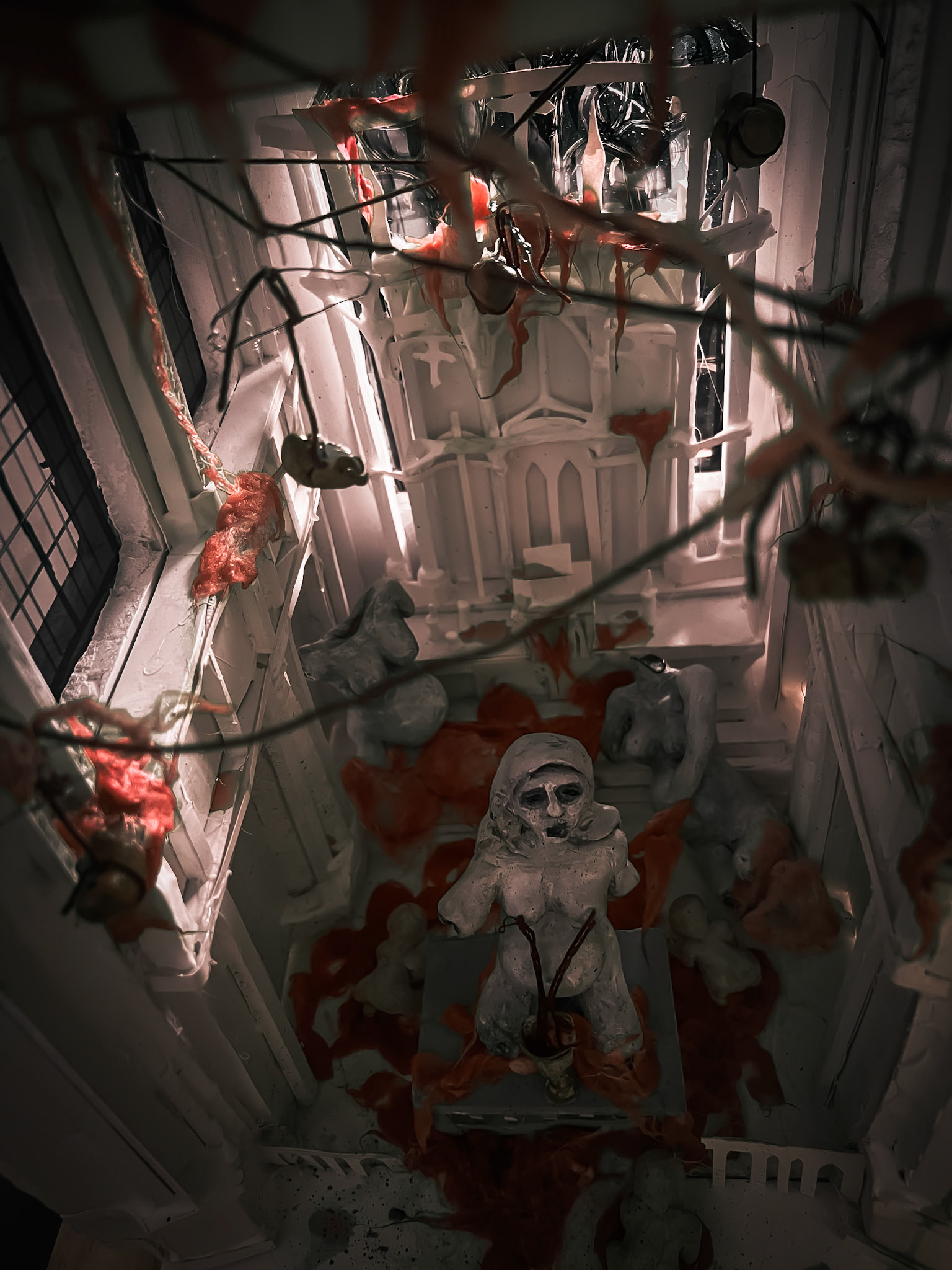
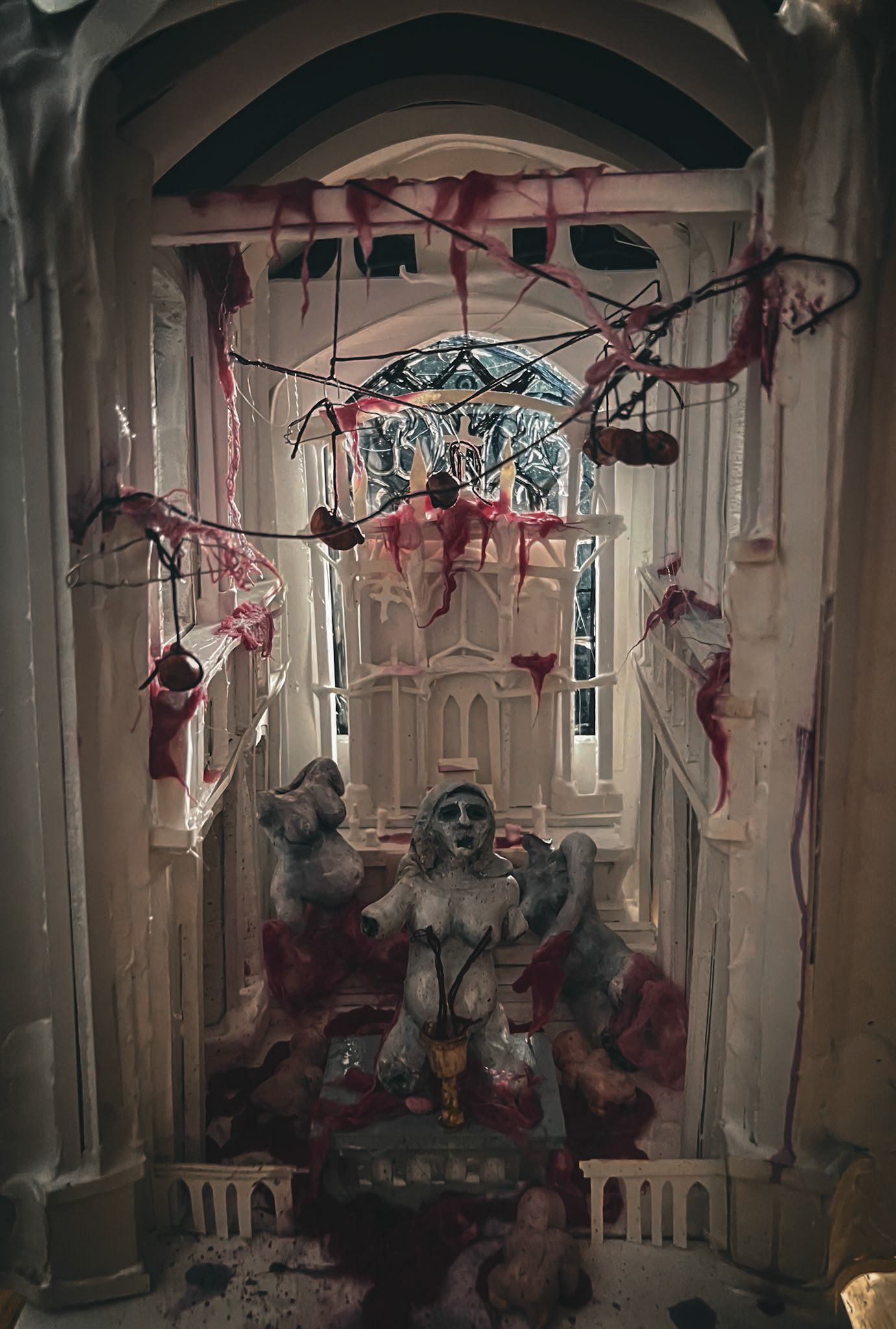
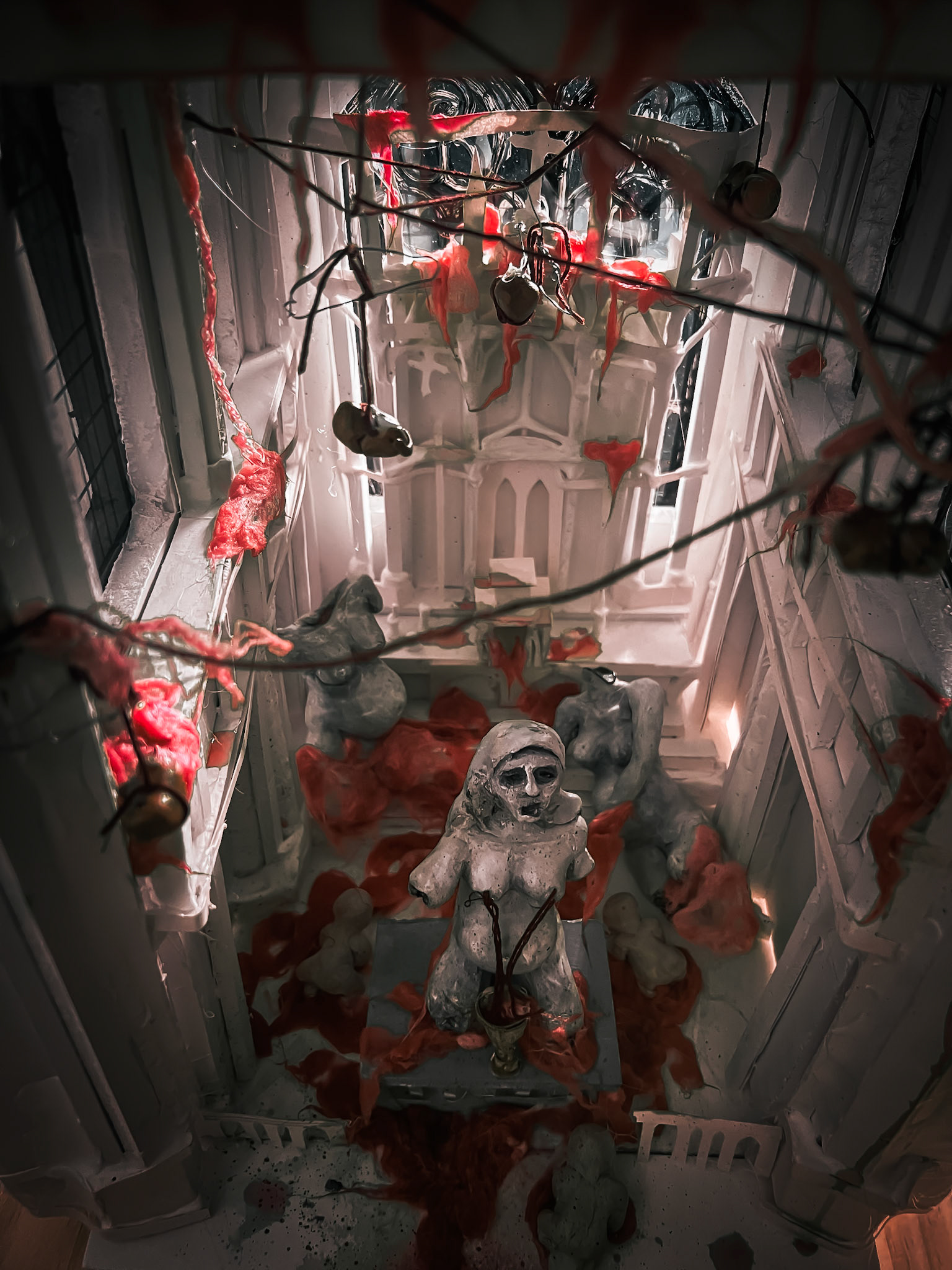
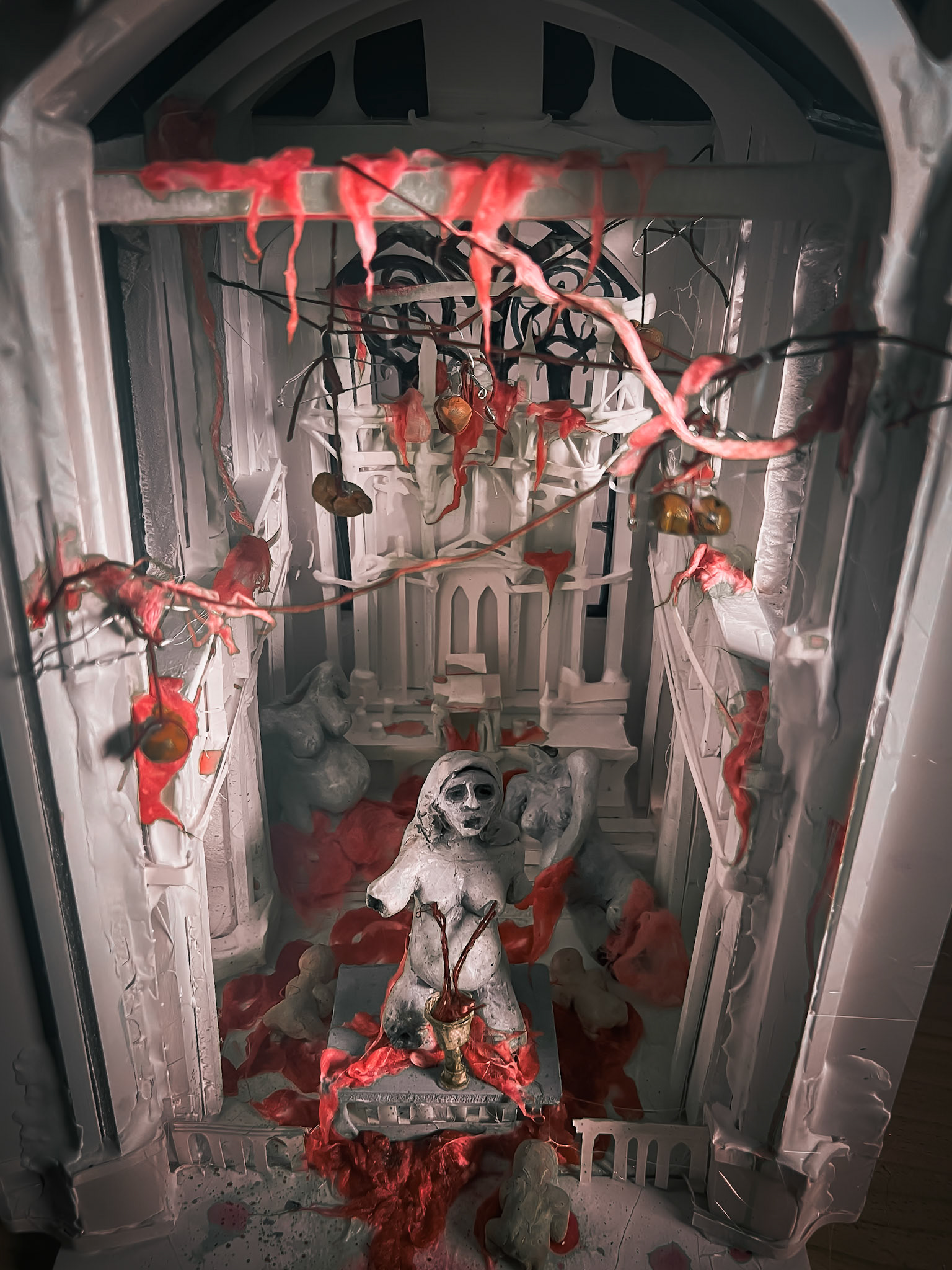
AN ARCHITECTURAL INTERVENTION
Comfort and pain, trustworthy and untrustworthy, inviting and scary; are the conflicts that occur on the list of 20 social words I associate with Churches. My fear clashes with a sense of awe as I gaze up at the towering columns illuminated by stained glass windows. Being a queer pro-choice woman goes against some of the most prominent pillars of the Catholic religion. The pill I take every morning to prevent pregnancy is seen as going against god’s plan for my life and my true purpose. I sit with a sense of peace until I am reminded that parts of my identity and existence go against everything my religion teaches.
My original sketches sought to capture the intricate and architectural marvel that many of the cathedrals of NYC appear as. To render every tiny detail I find in the churches I have seen in New York would be almost impossible to complete in a week. Therefore I wanted to focus on the elements that hold the historical and majestic sense of the church. Towering archways, heavy columns, intricately designed windows, and a dominating altar were most important to the model. I focused solely on the altar portion of the cathedral as it is the space that holds the most religious symbolism for the church and the physical source of my conflict.
My intervention started as a more general idea of exposing the bloodshed that continues to occur in America as “thoughts and prayers” are poured out on social media overbearingly shadowing cries for direct action. Therefore my original idea was to place a graveyard for all of the victims of gun, sexual, racial, etc. violence in America that the church only offers prayers for rather than solutions for. However, the placement of tombstones seemed too literal and didn’t channel the feelings of rage and sorrow I feel when leaders from my religion shame females for taking birth control, having abortions, or choosing to not have children. A tombstone would make it seem as though my desire to fight the constant push against reproductive rights is dead and that the church has essentially killed my passion. Therefore my approach took a darker turn and I envisioned an intervention in which the bloodshed and cruelty of taking away access to safe abortions and pregnancy prevention was poured out into the church and overtook the towering altar.
I created three pregnant female figures out of clay and removed limbs, heads, and hands to show how the church views women as nothing more than maternal figures destined for childbearing. They are not valued for every part of their existence but only for their potential to provide for the next generation of Christians. This extends into an invasive assault against women’s rights to control their bodies as many in the church desire a future in which abortions are banned and birth control is not used. However, taking away access to safe abortions only poses a threat as women are strong problem-solving creatures and will find new ways to maintain control over their lives. These ways can be tragically unsafe and are unnecessary when current medical advancements allow abortion to be a relatively low-risk operation. I chose the symbol of a coat hanger which has been used to reflect the time in which abortion was not allowed and women were forced to use dangerous and painful methods to terminate unwanted pregnancies. I wish the symbol could be put away and we wouldn’t have to be reminded of such a tragic and dark time in the history of women’s rights, but the reality is the ultimate goal of the church and the pro-life movement is to bring that past back. Therefore it seemed necessary, despite the goriness and pain rooted in this symbol, to include it in my intervention and hang it on the strings extending across the ceiling of my model.
The gory blood-like red streaming through my intervention was made by soaking tampons in cranberry juice. The cranberry juice was a cheaper alternative to wine, the eucharistic symbol of Christ’s sacrifice. I then placed the “blood” soaked deconstructed tampons throughout the church as a brutal reminder of what happens when the right to control one’s own body is stripped away. The blood is a symbol of the sacrifice women are forced to pay when they are viewed as nothing more than vessels to carry “god’s” children.
The scale of the intervention was also important as I did not want the statues to be human-sized but rather calculated to the scale of Michaelangelo’s Statue of David which towers at seventeen ft. To not be overshadowed by the scale of the church architecture, my intervention overtakes the space to force the reality of the church’s action into view.
I think it is easy for Christian political leaders (consequently mostly men) and people who support the pro-life movement to ignore the dark reality and past of a world in which abortions were not accessible or legal. It is easy to just offer “thoughts and prayers” rather than face a reality in which women are treated like objects. They force women to have children but do nothing to protect these children in the face of gun violence and clergy abuse. “Thoughts and prayers” are poured out in a flood as Christians stay safely tucked away in their majestic churches and solemn rituals. Though my intervention may seem gory or overly graphic to some, I think it is necessary to expose the politics and social aspects of the church for what they are. I identify as a practicing Catholic, but that does not mean I can ignore the darkness found in my religion and accept it for what it is only offering my “thoughts and prayers” for those harmed and abused by the church. I believe it is my responsibility to think critically about the institution I attend and stand strongly in my personal beliefs even if it means I am viewed as going against my god.
